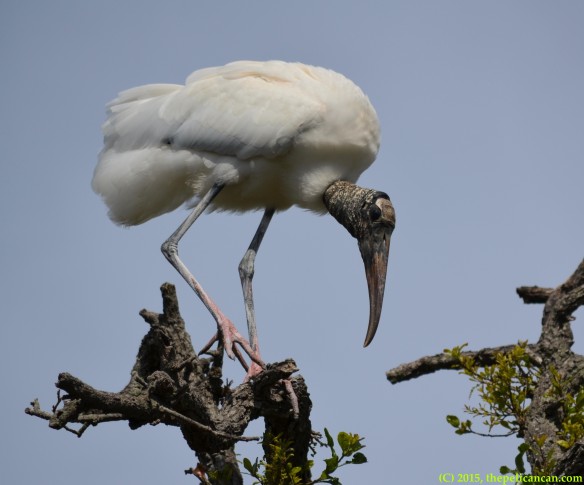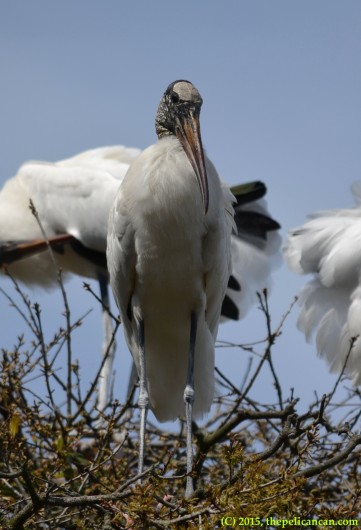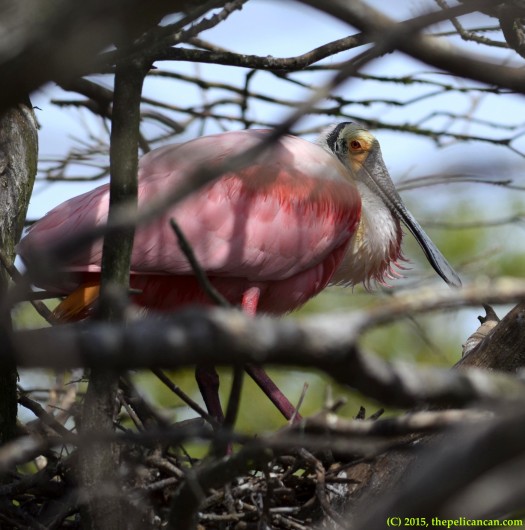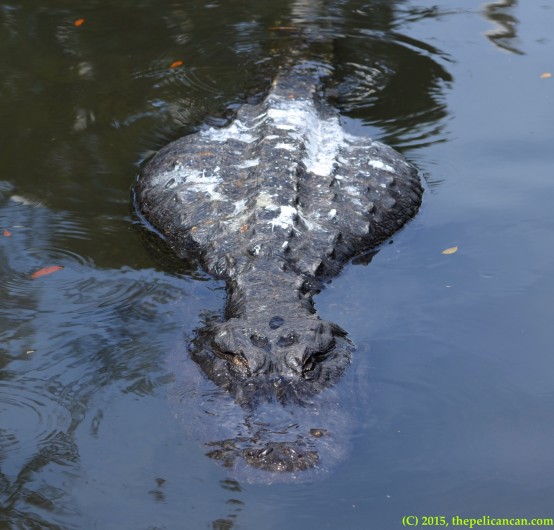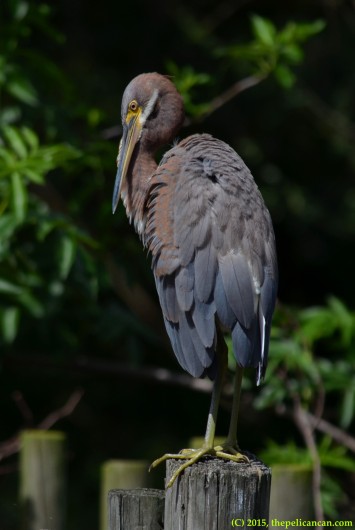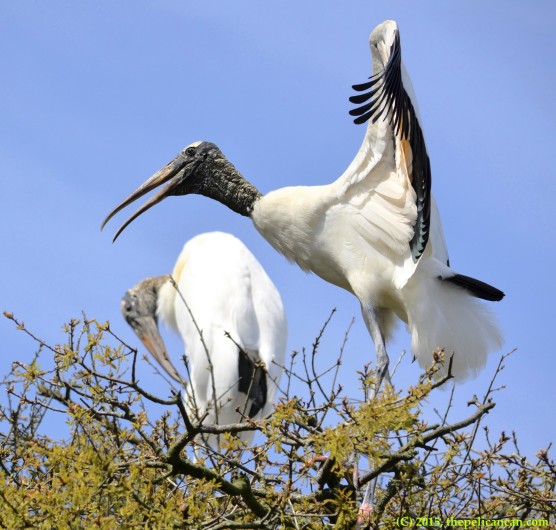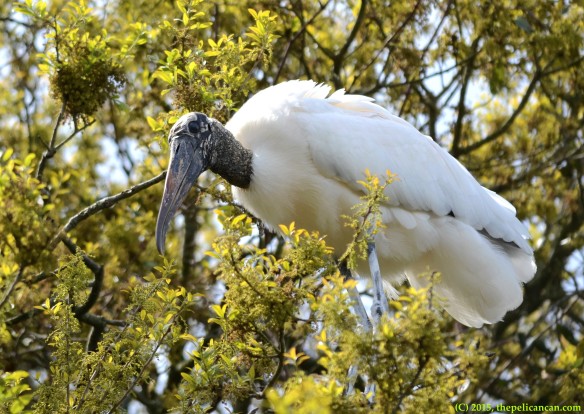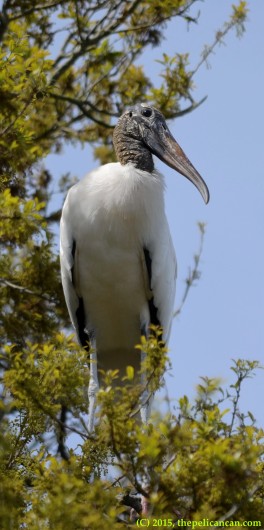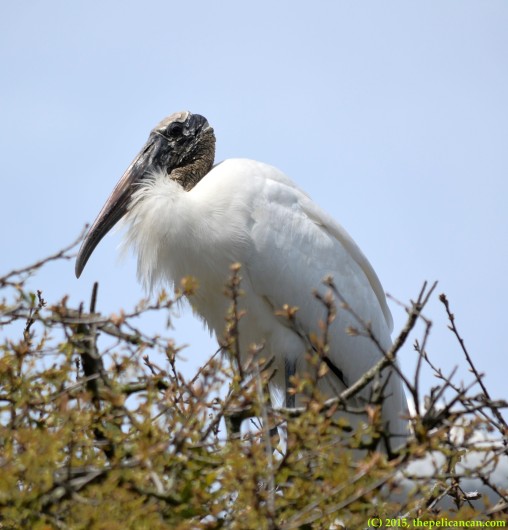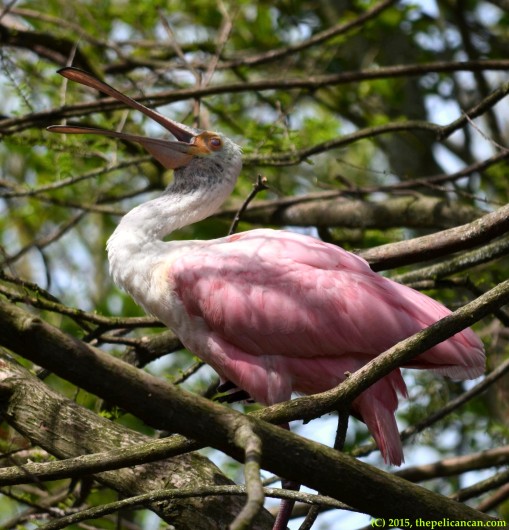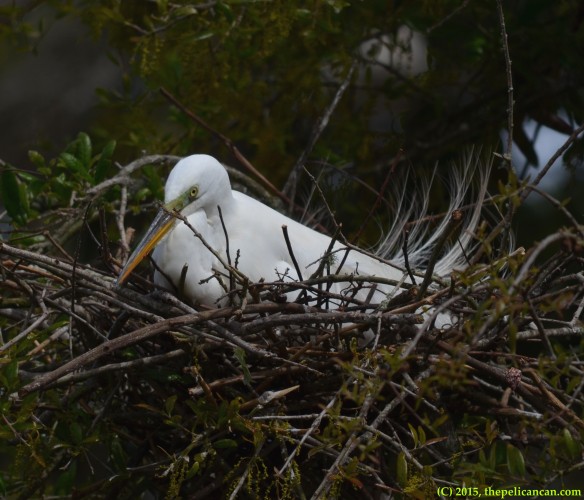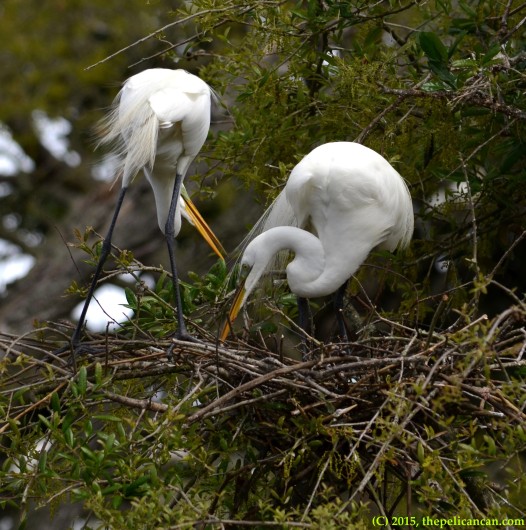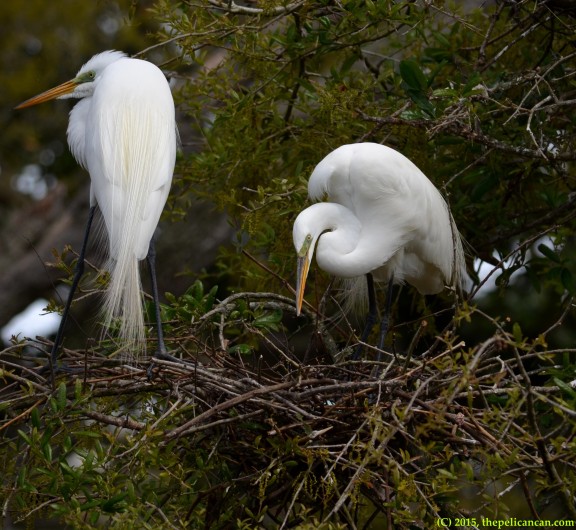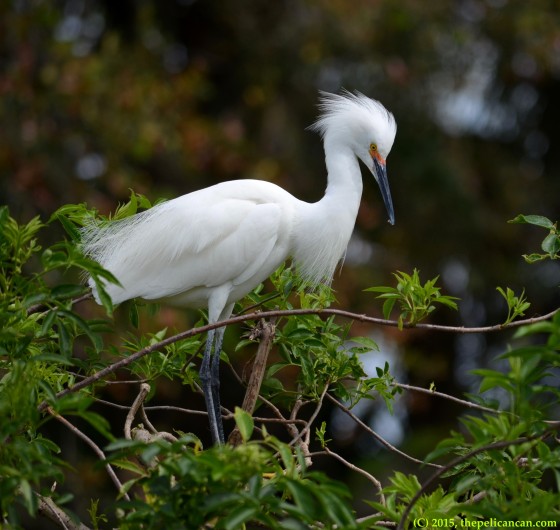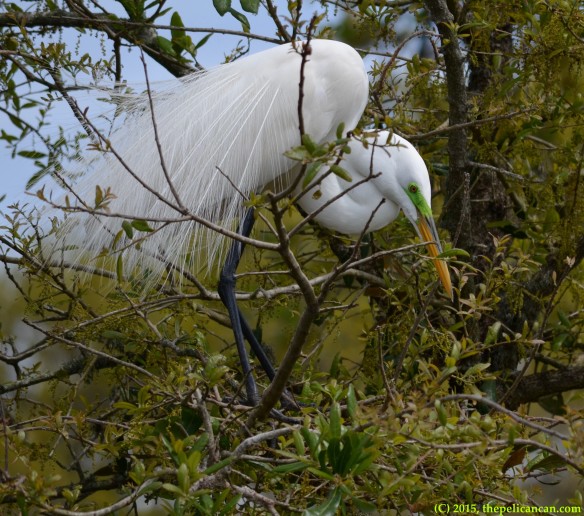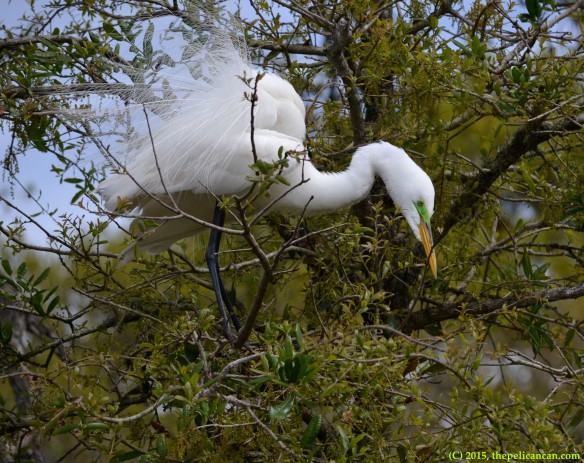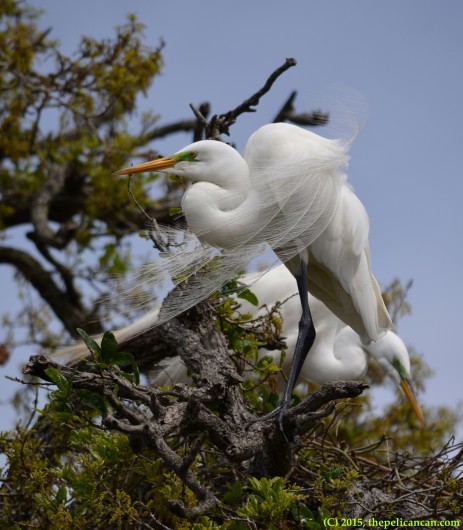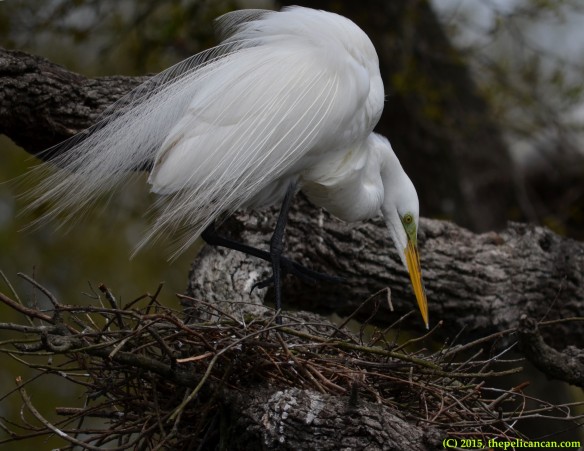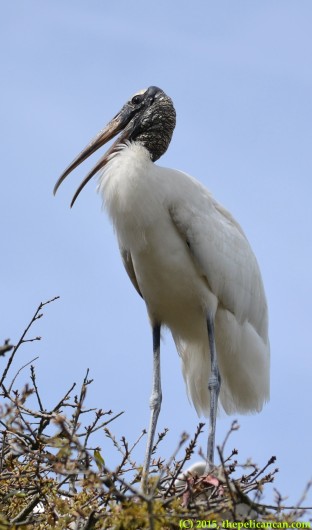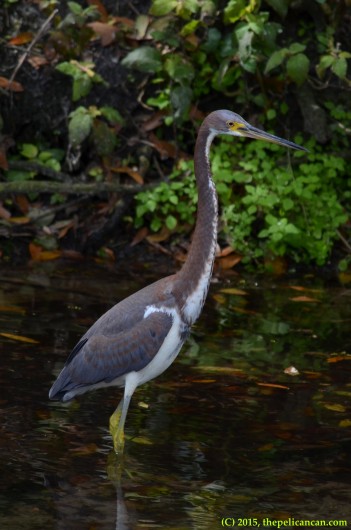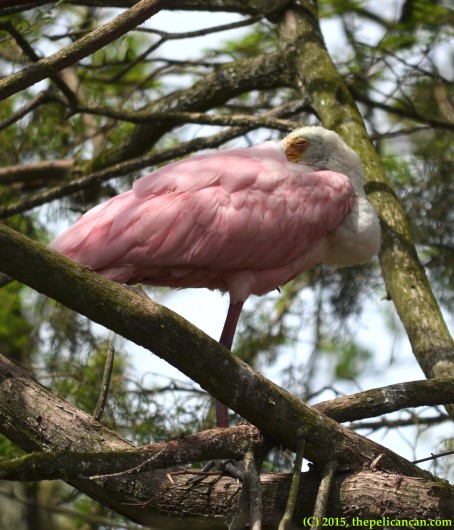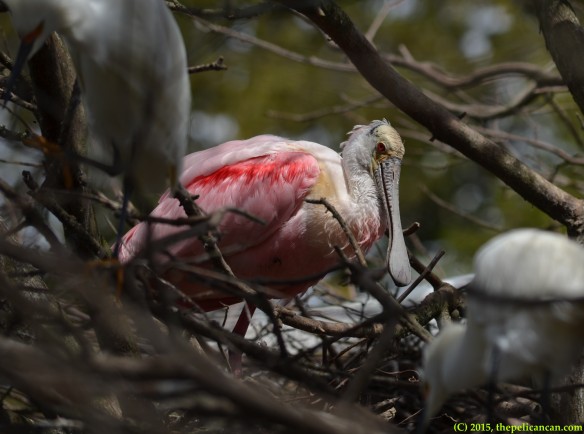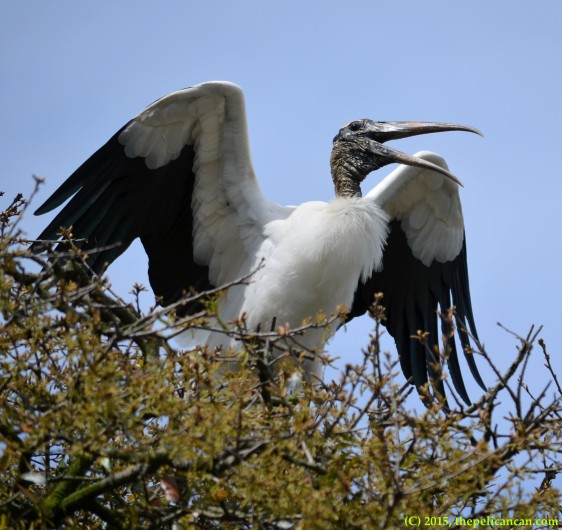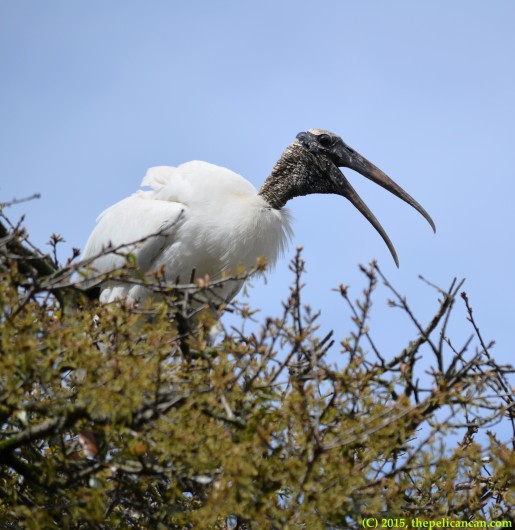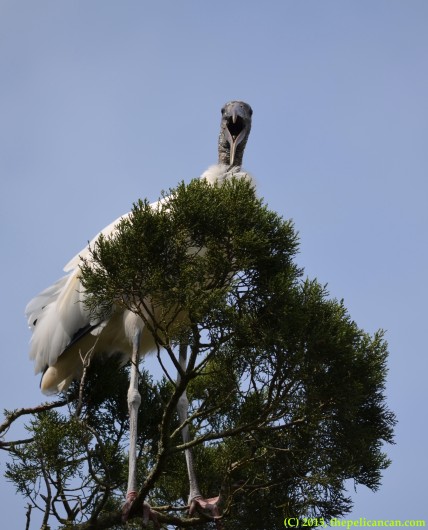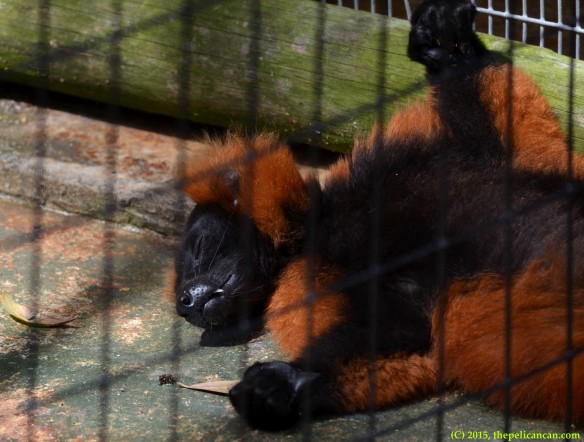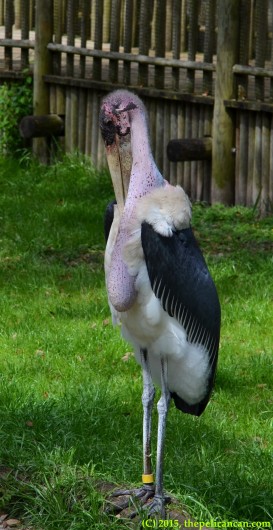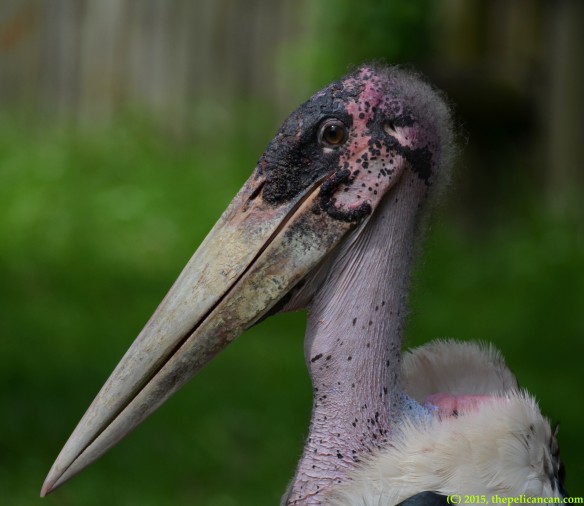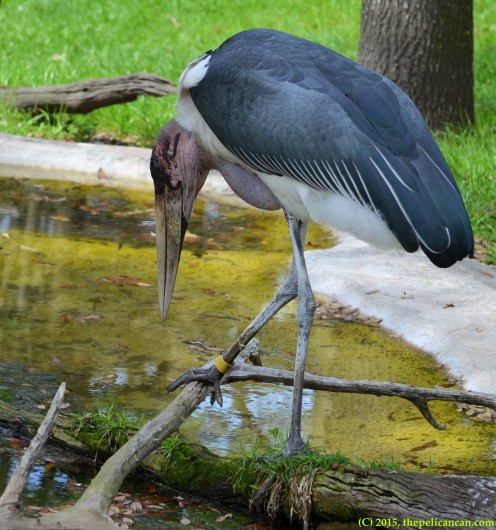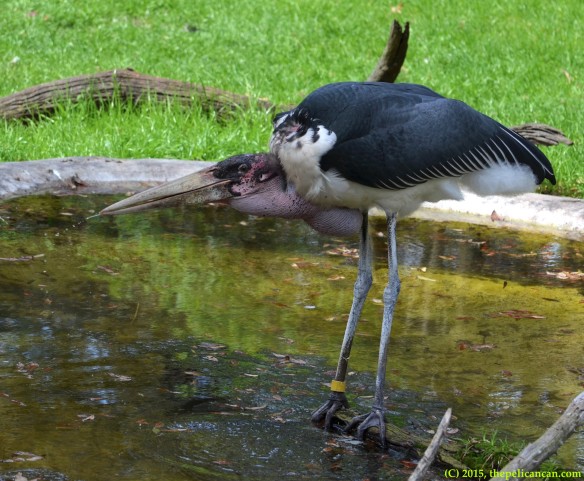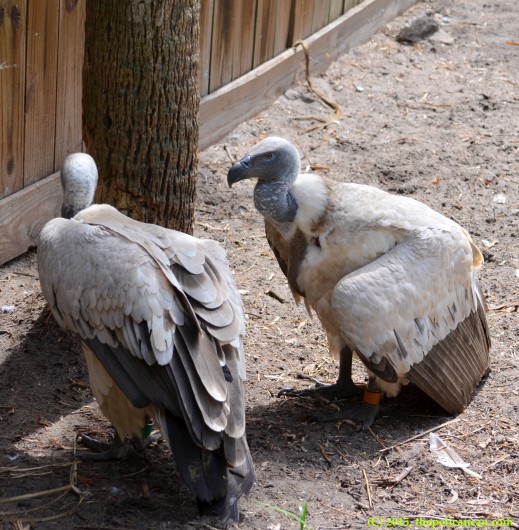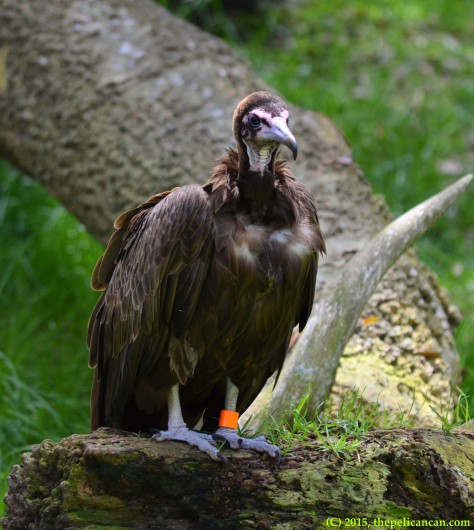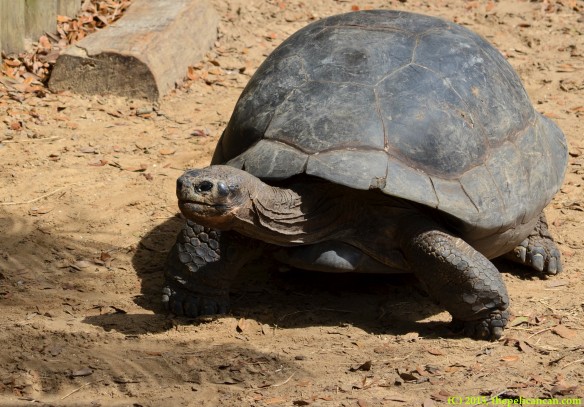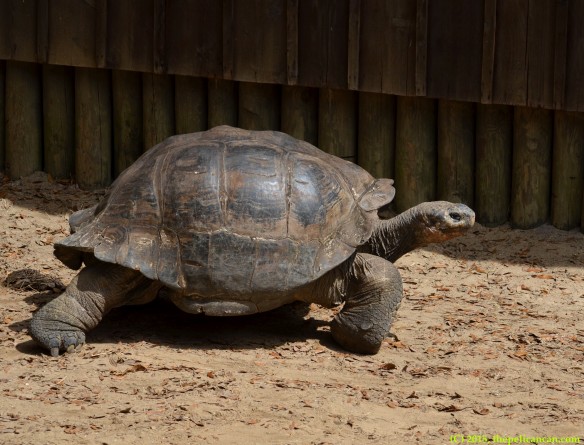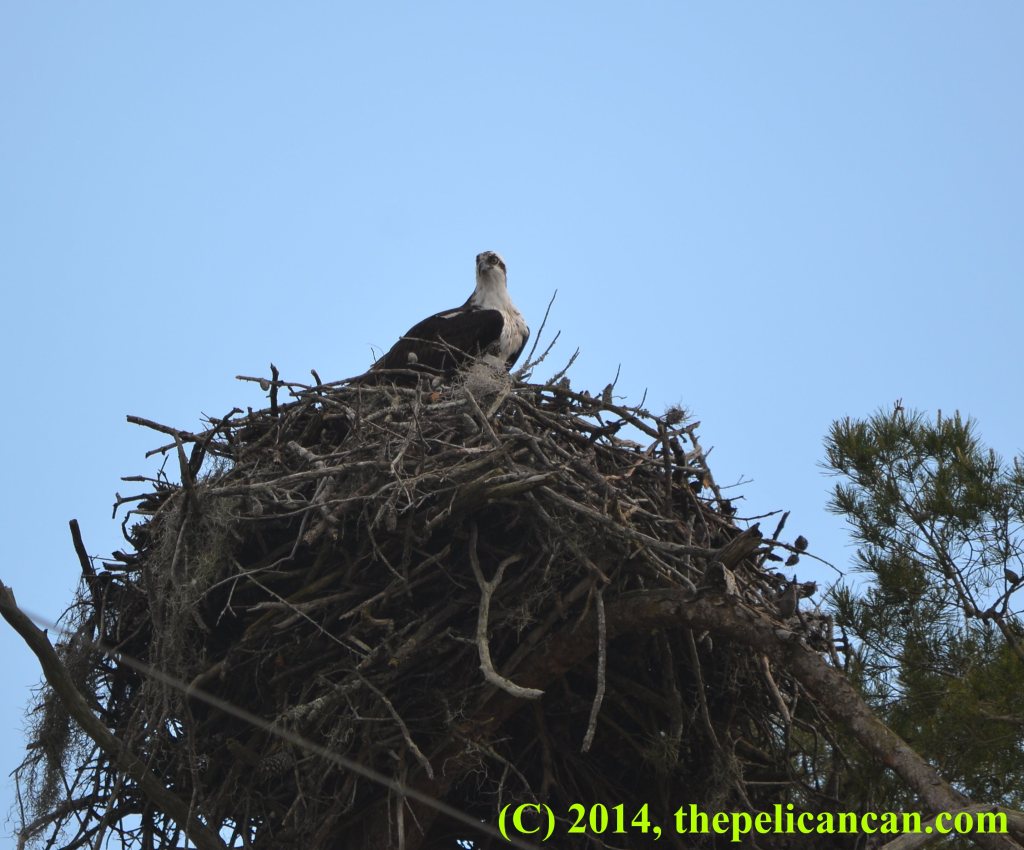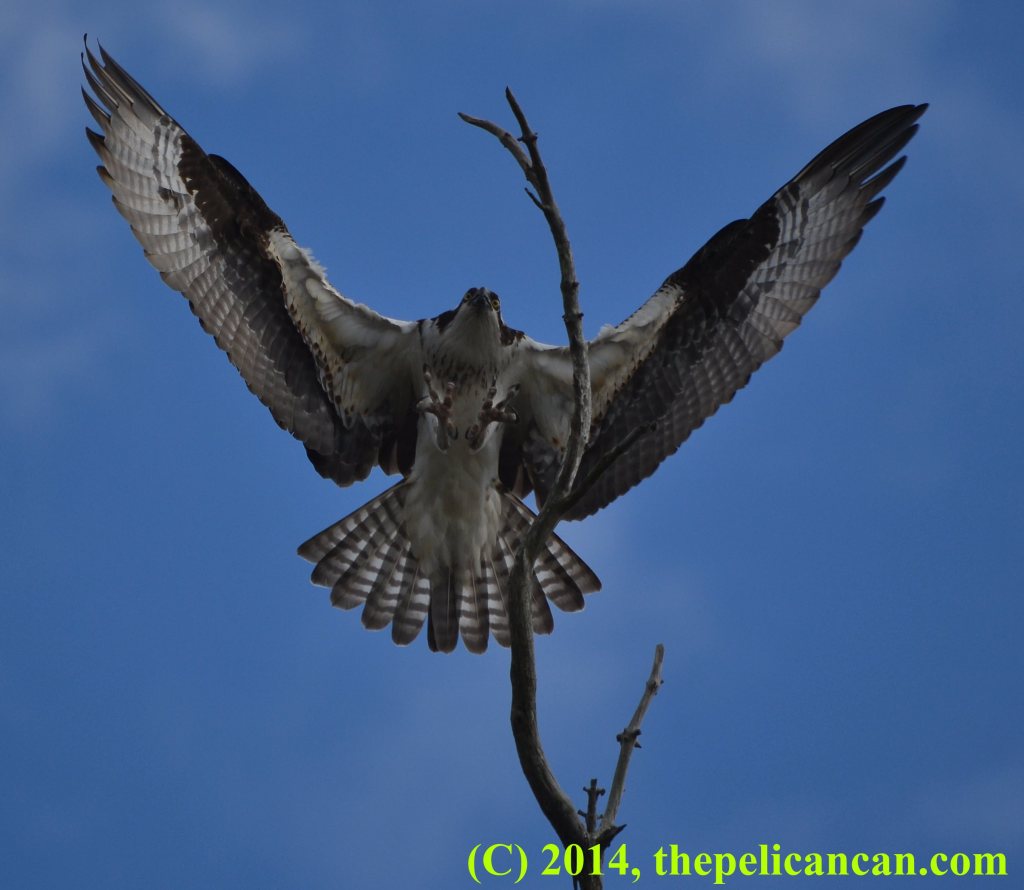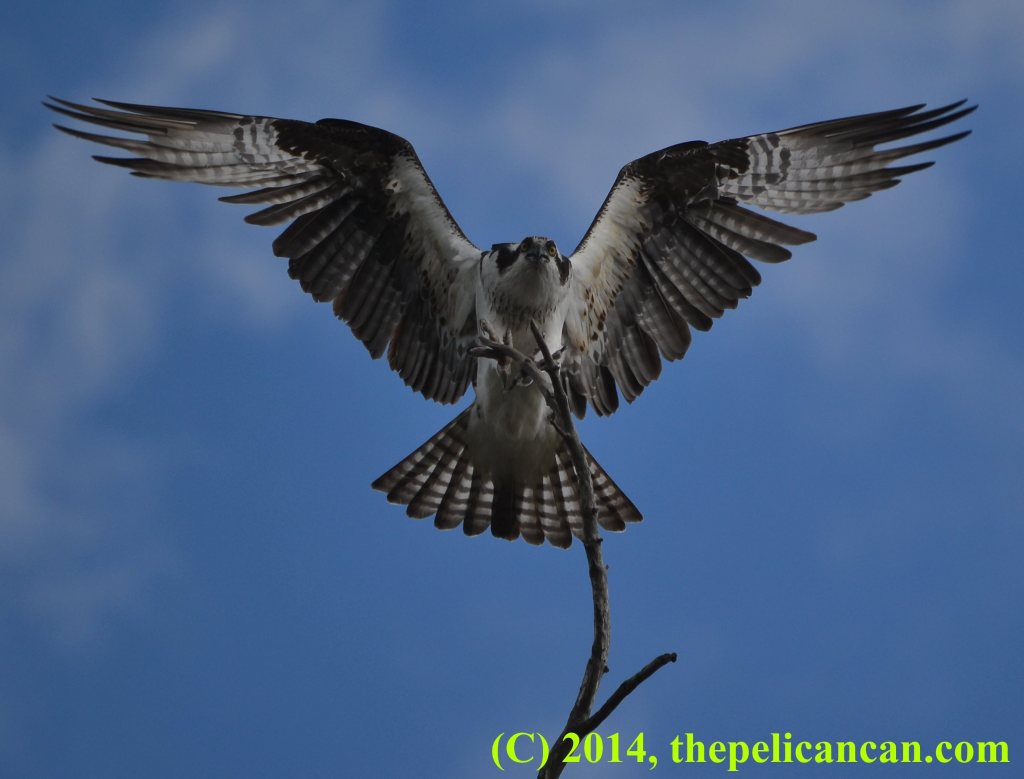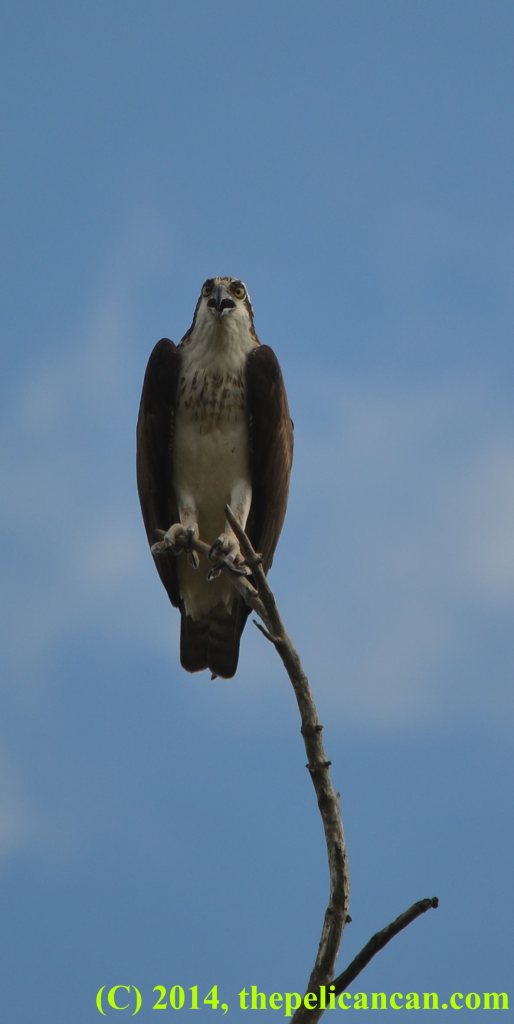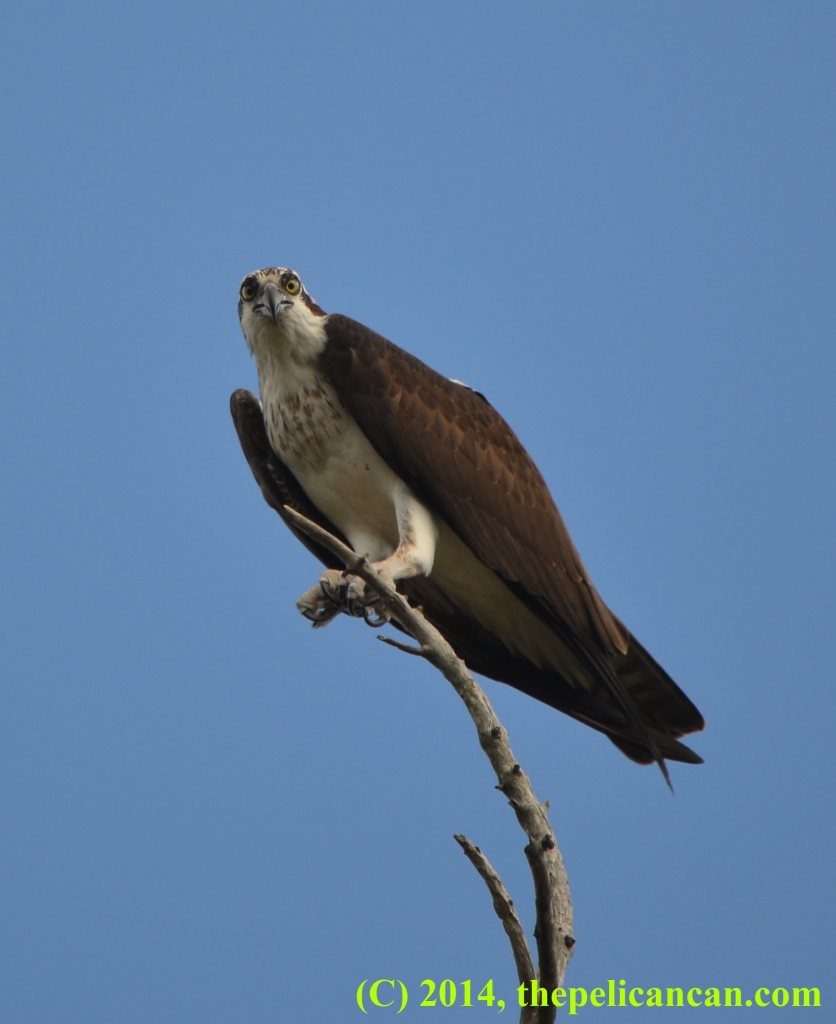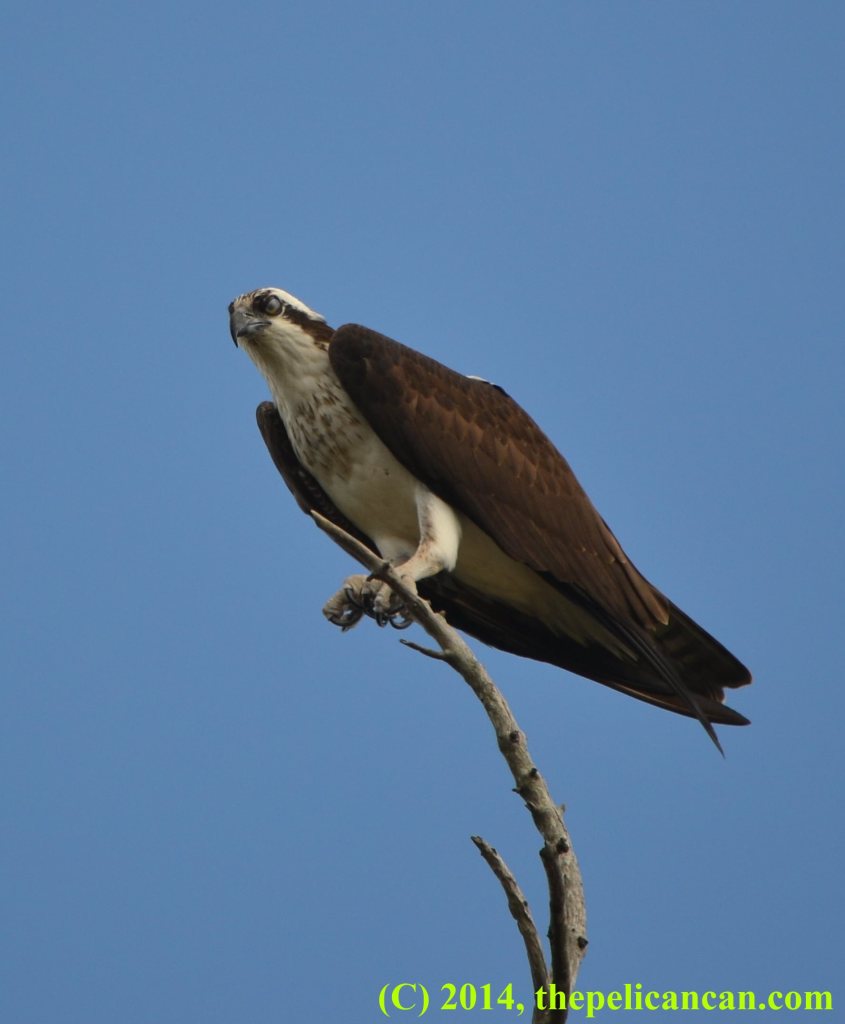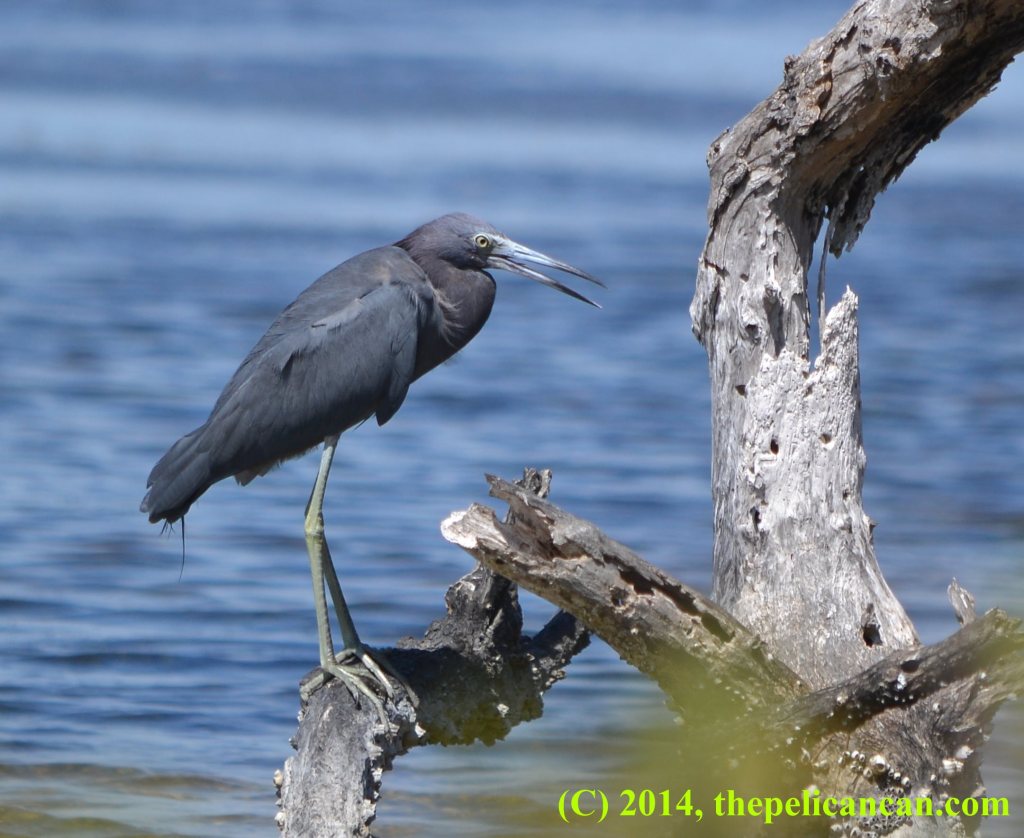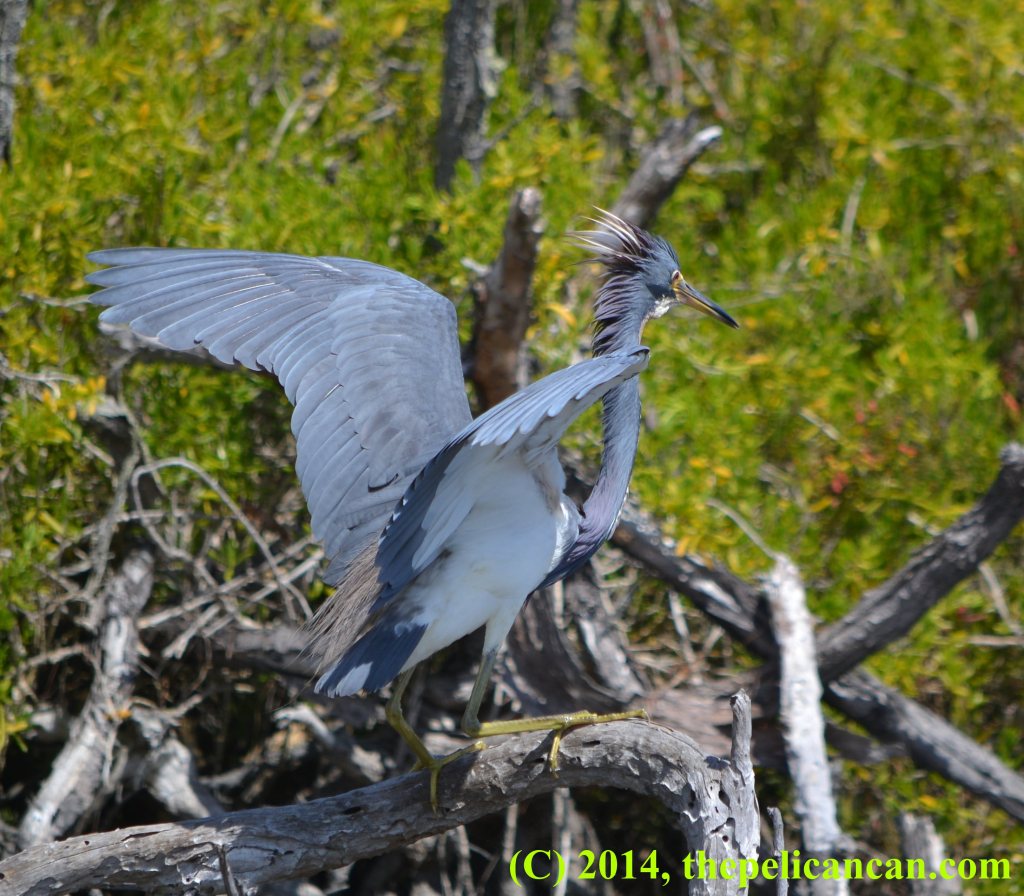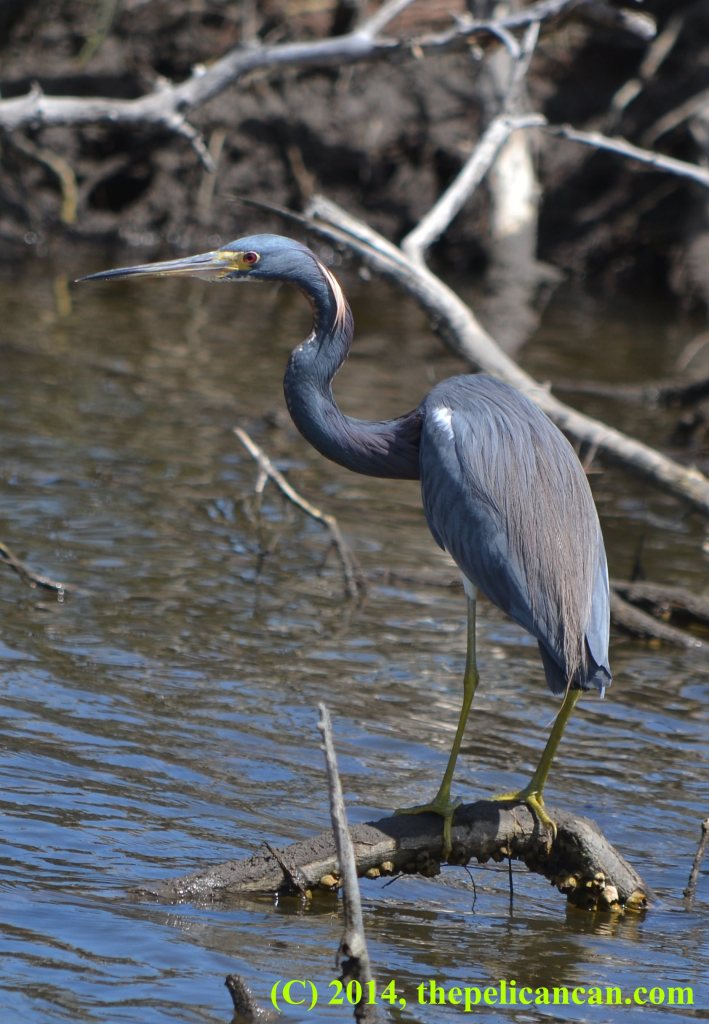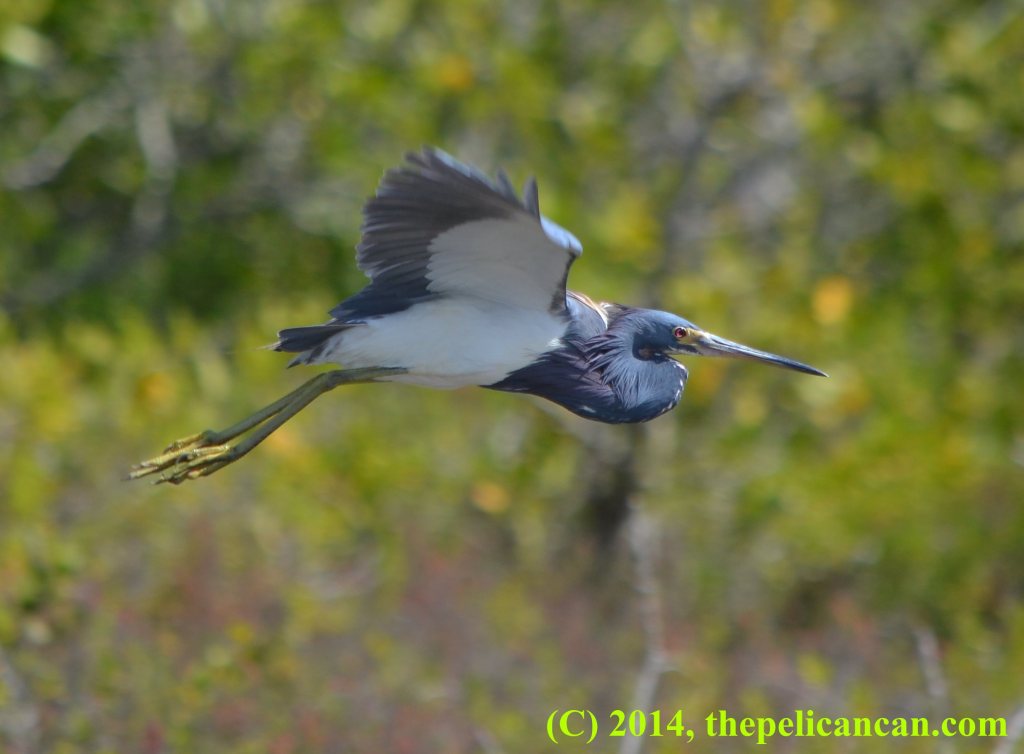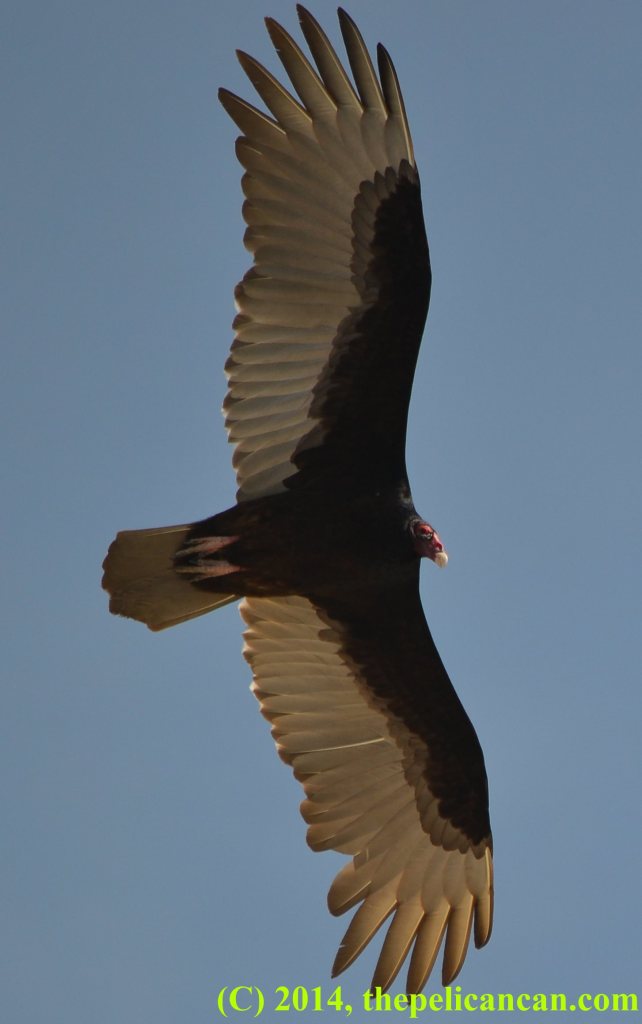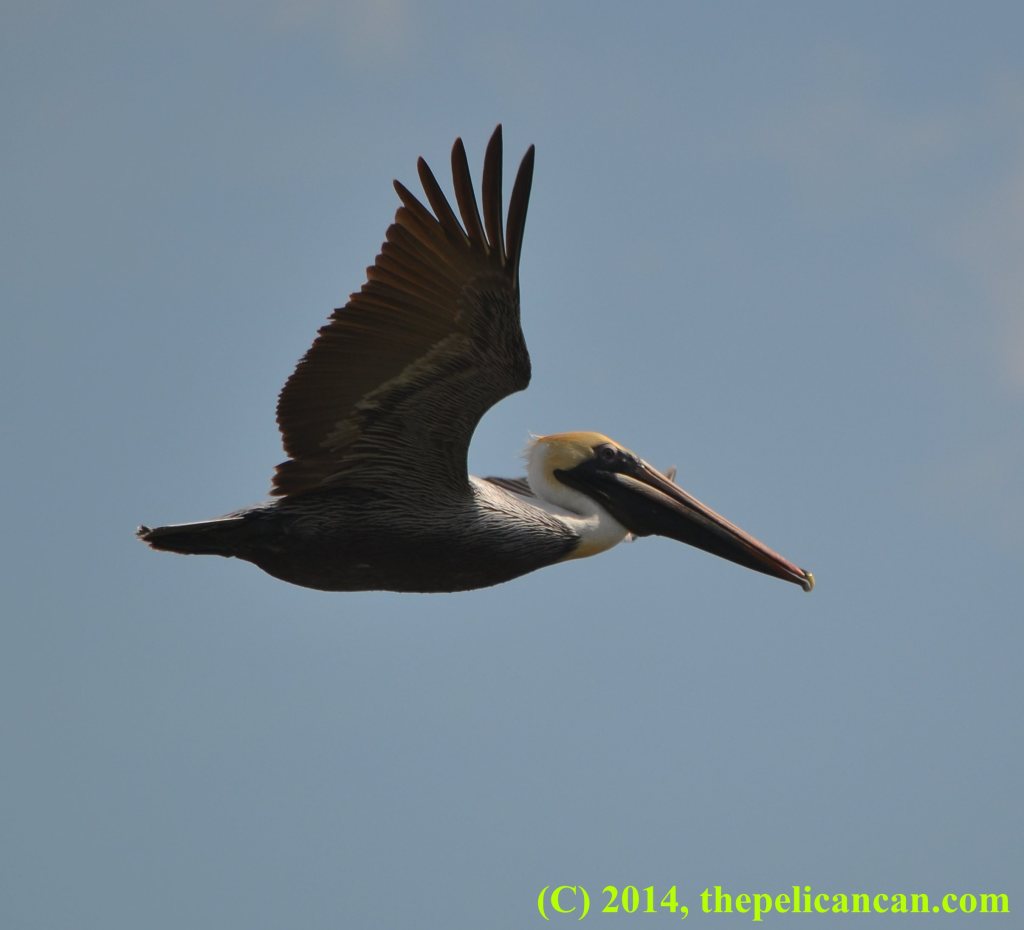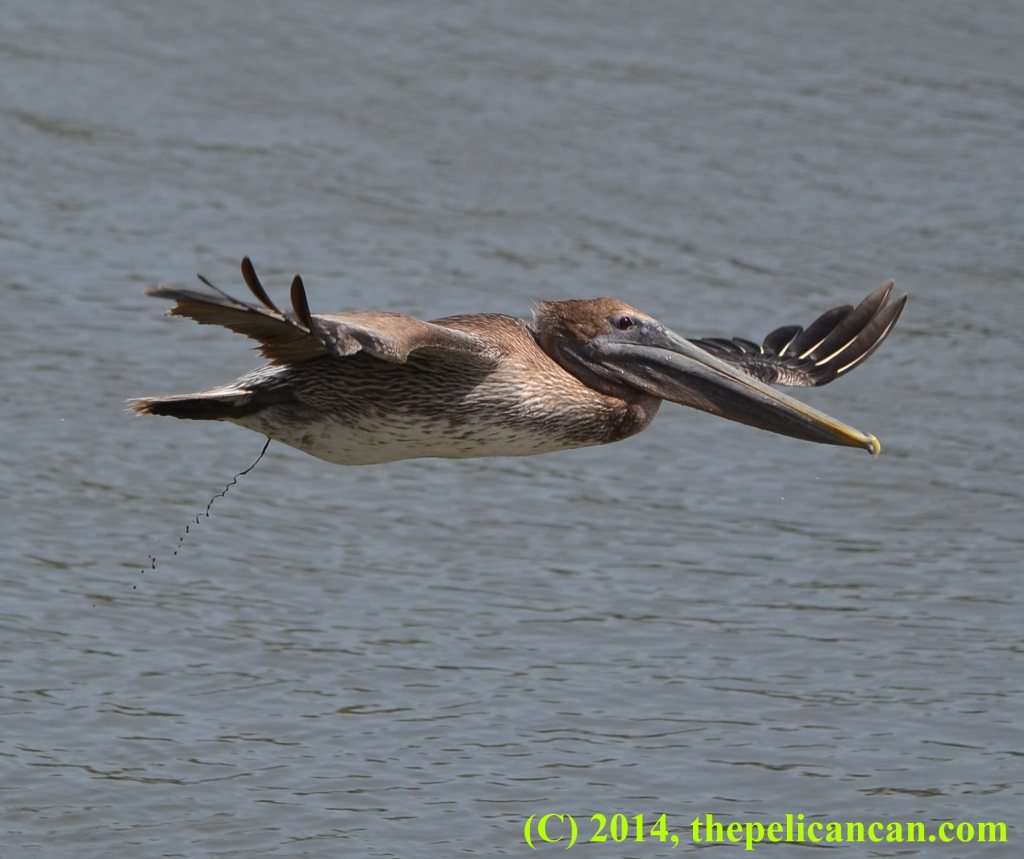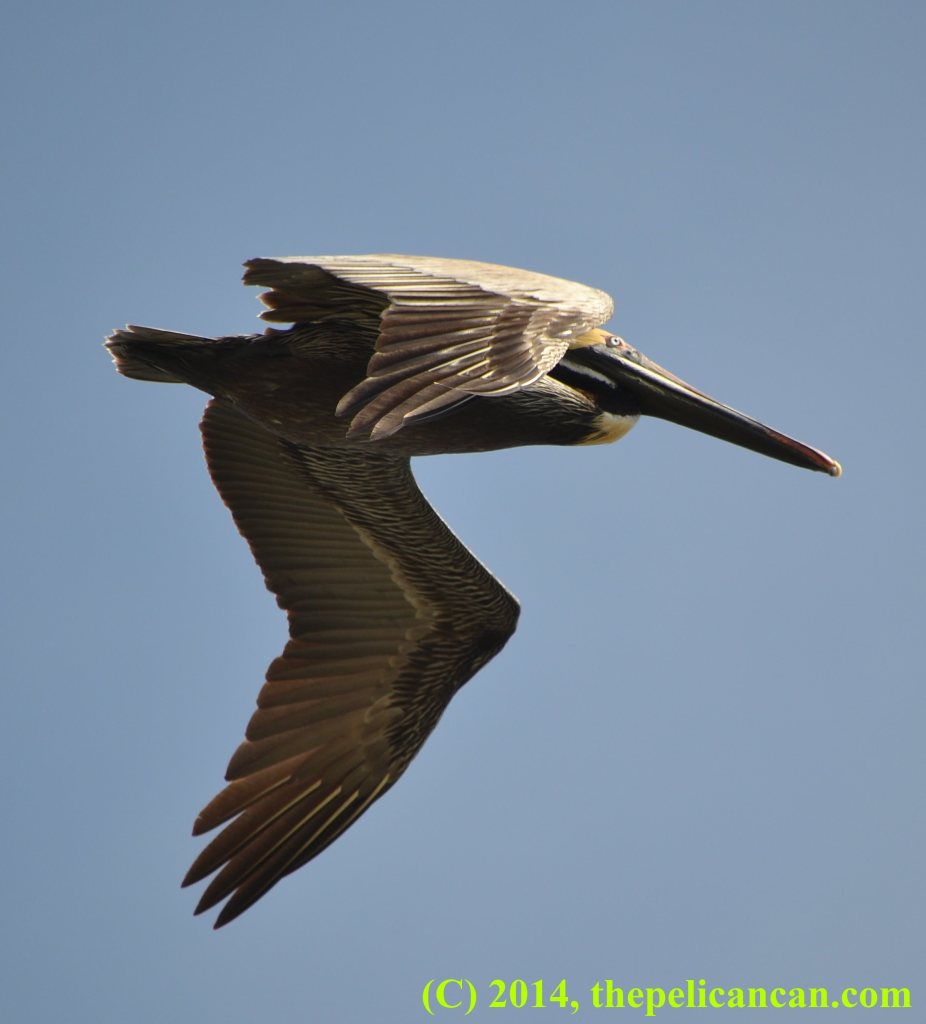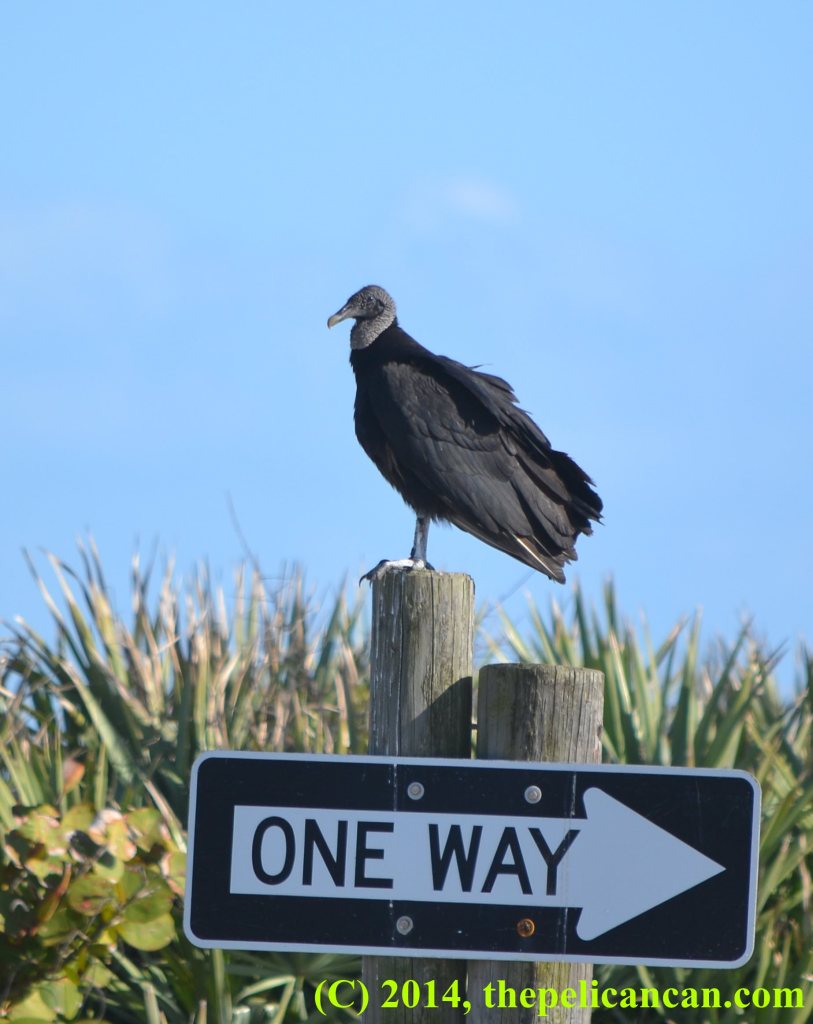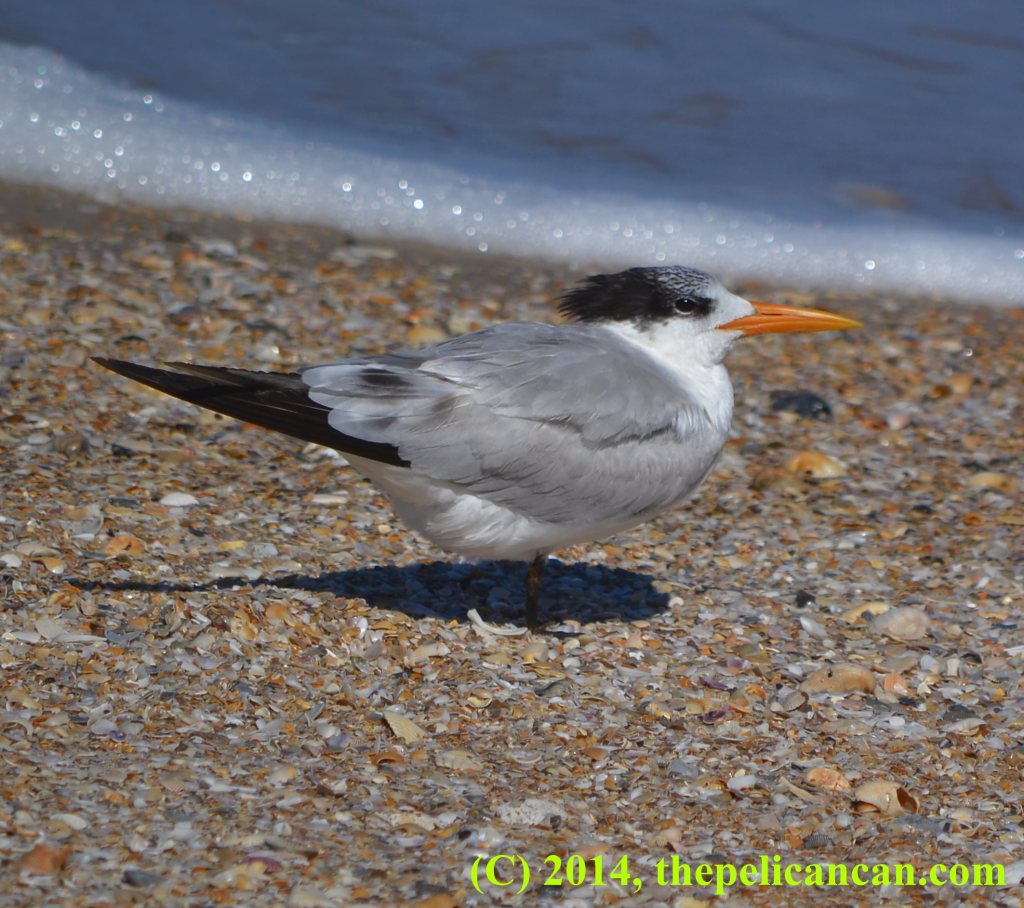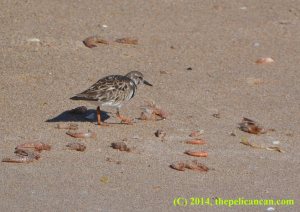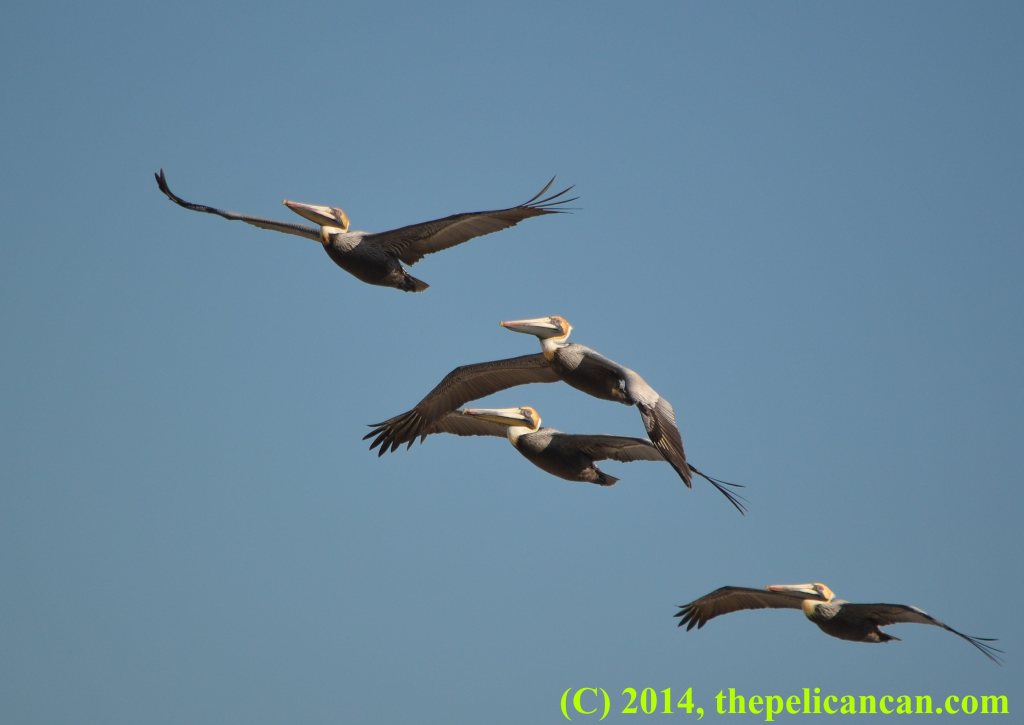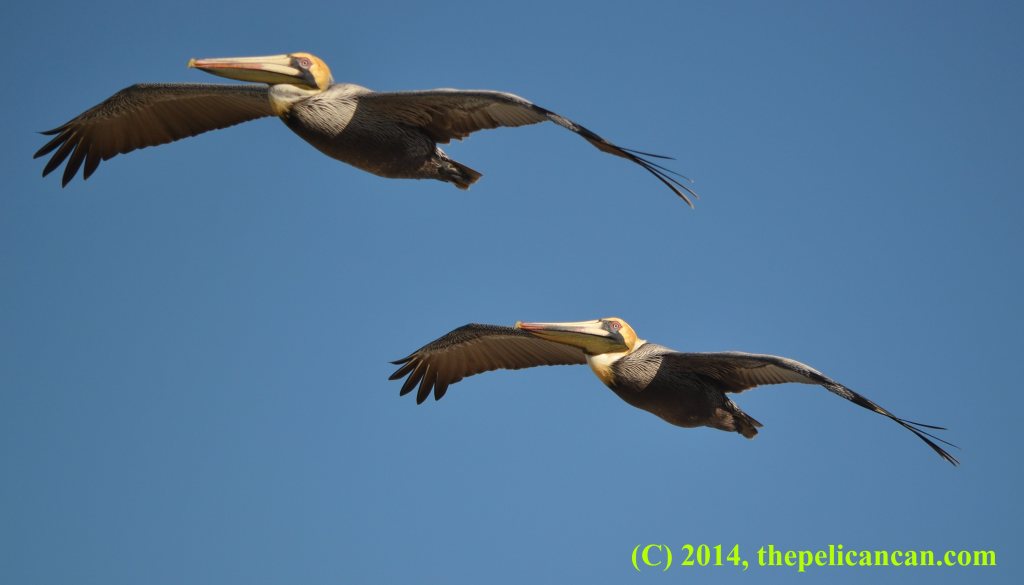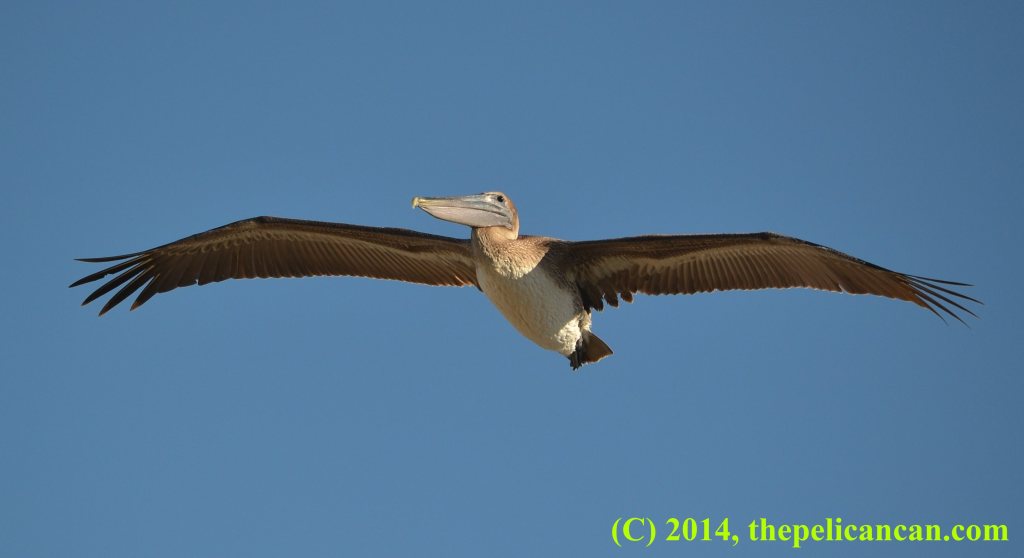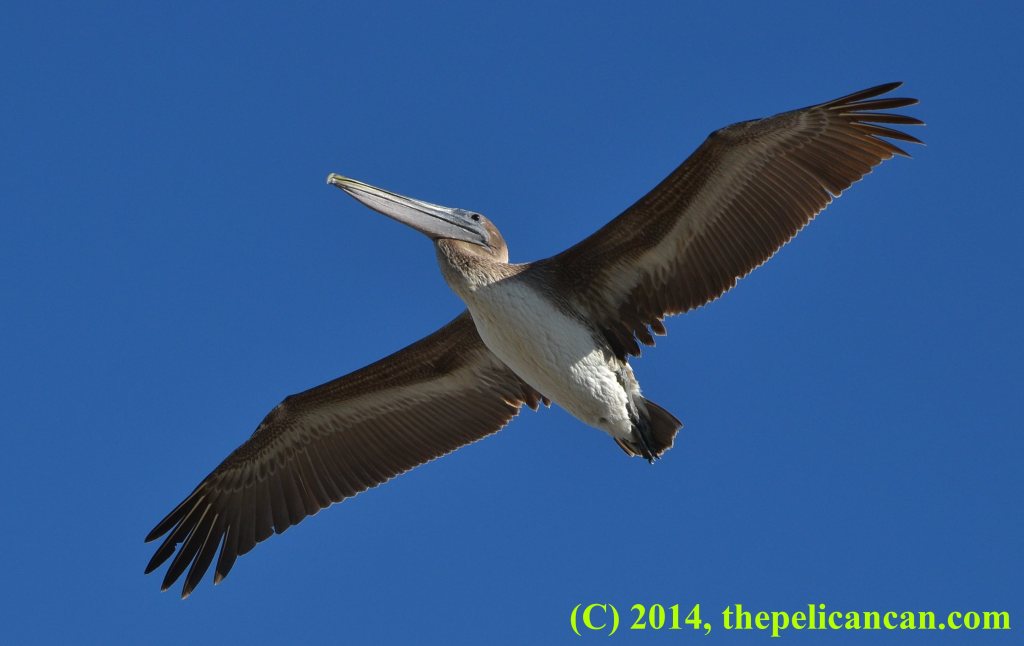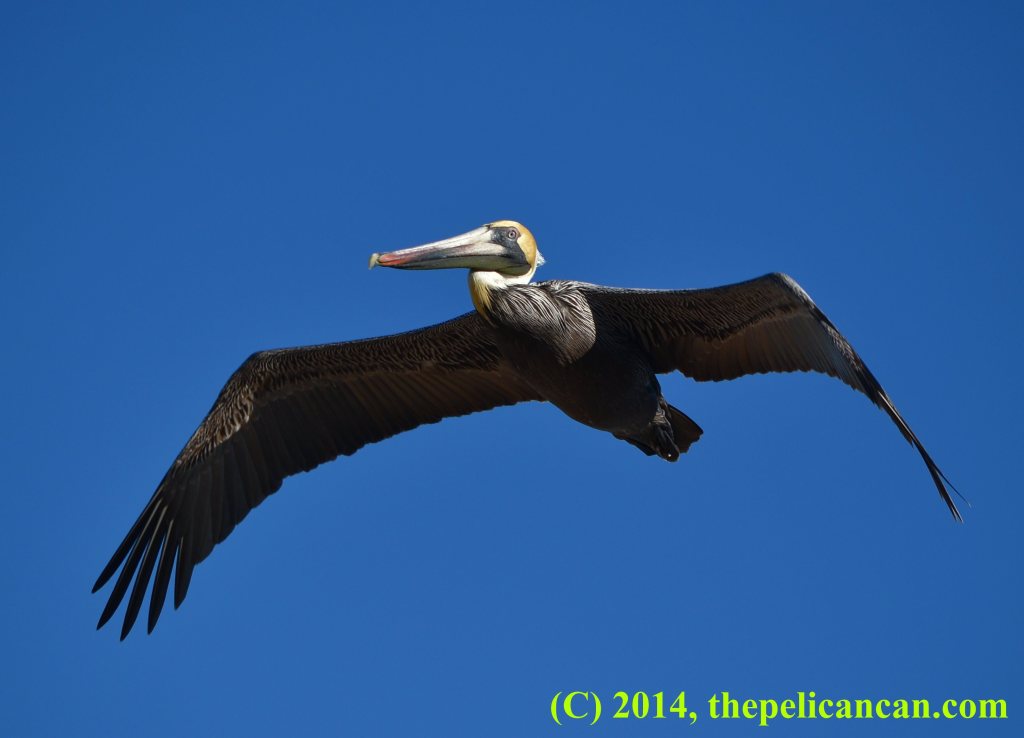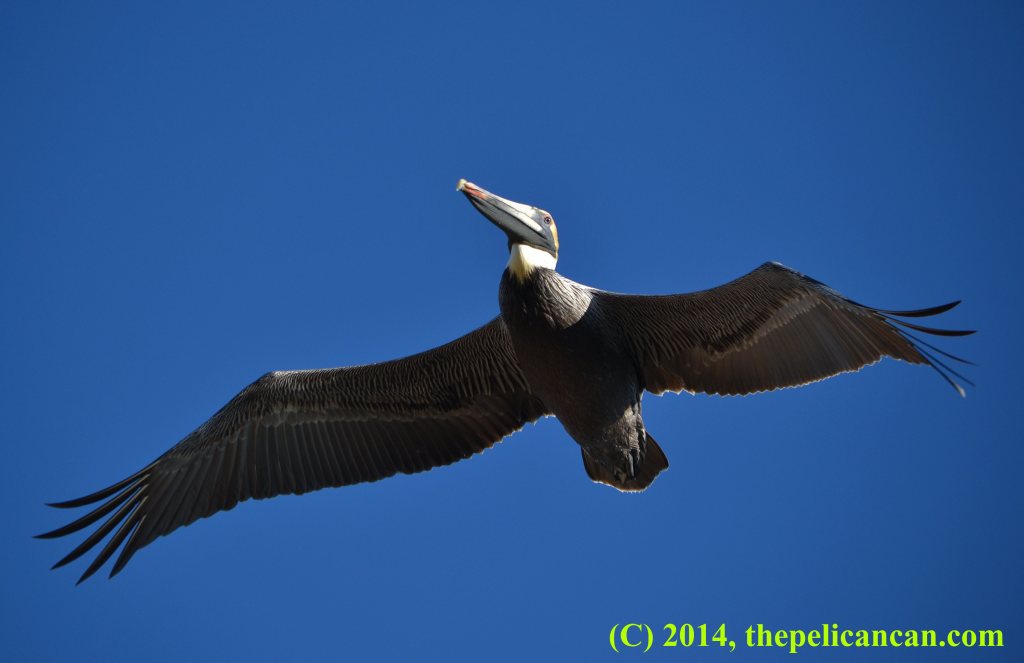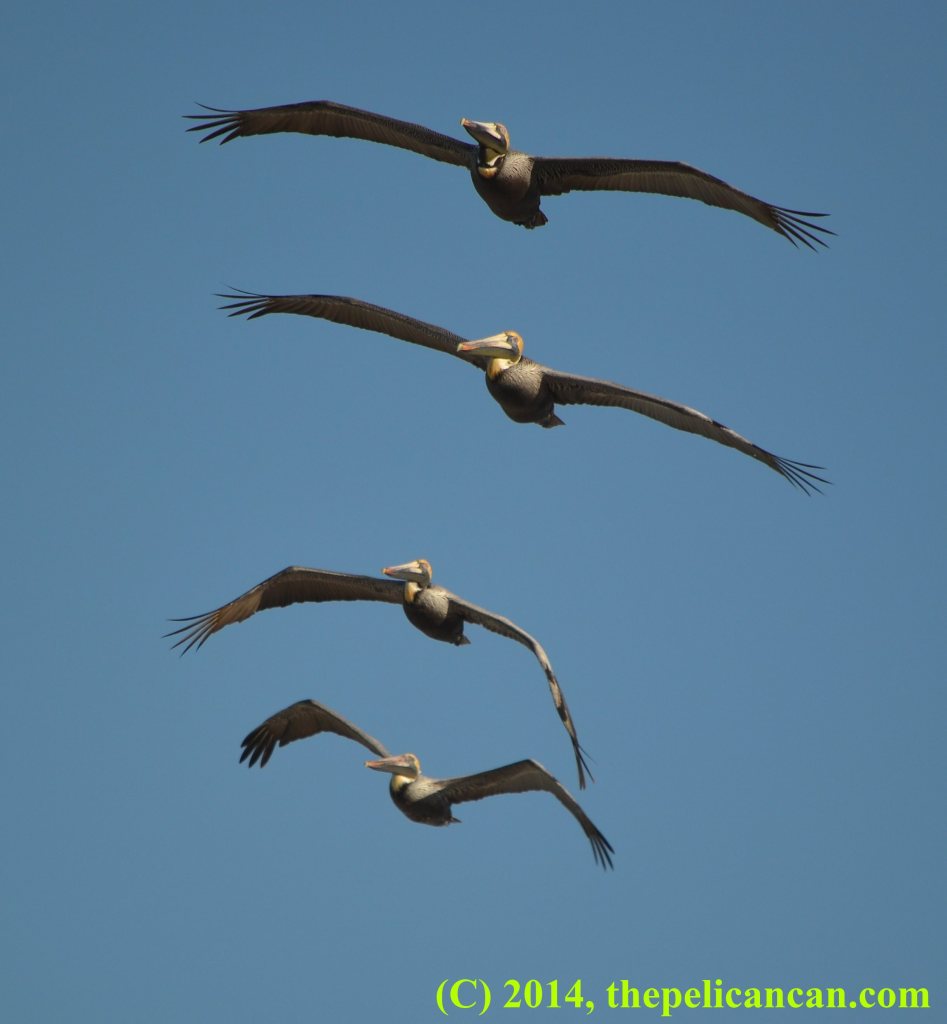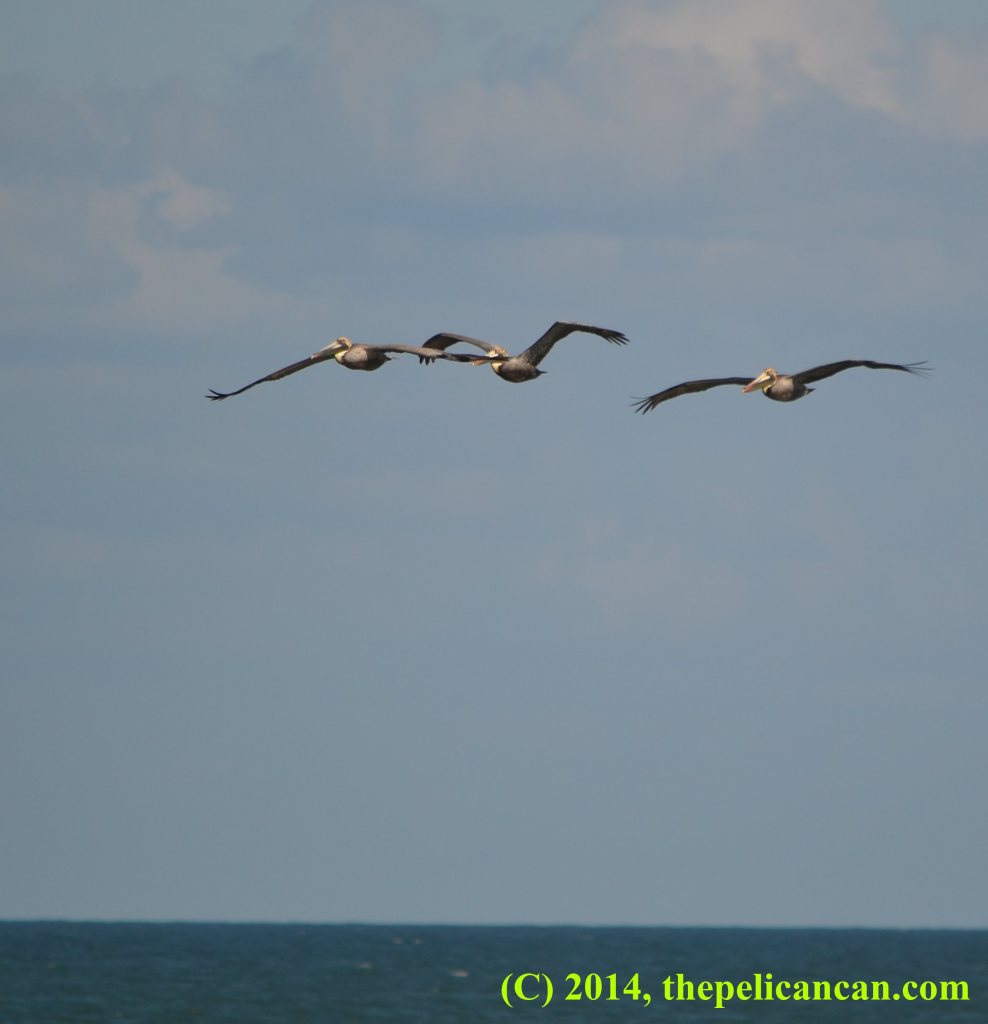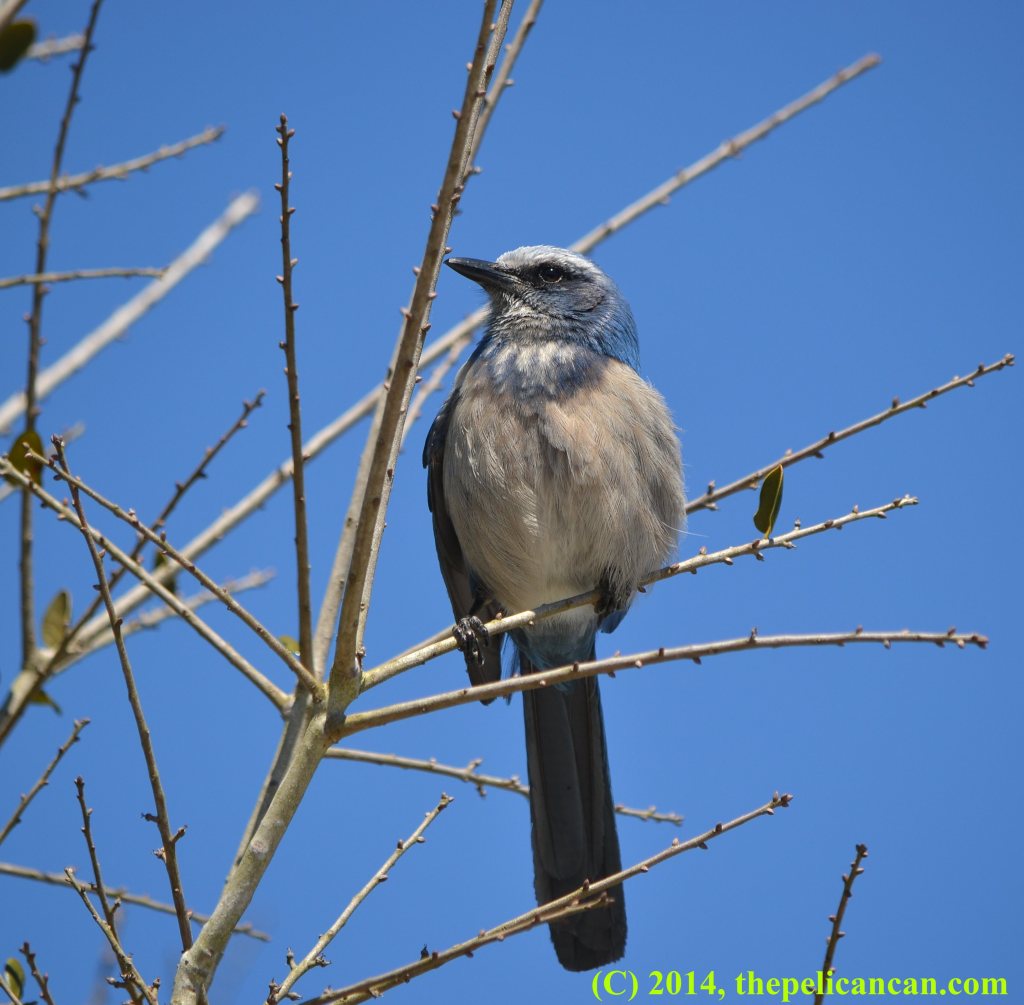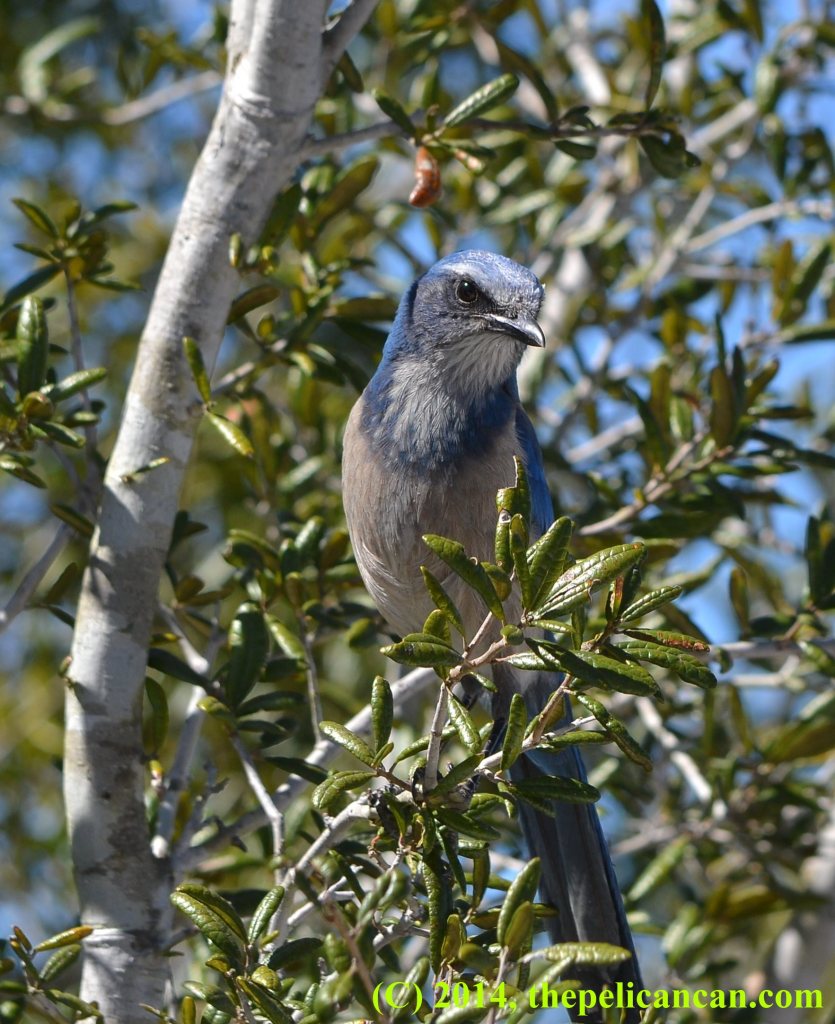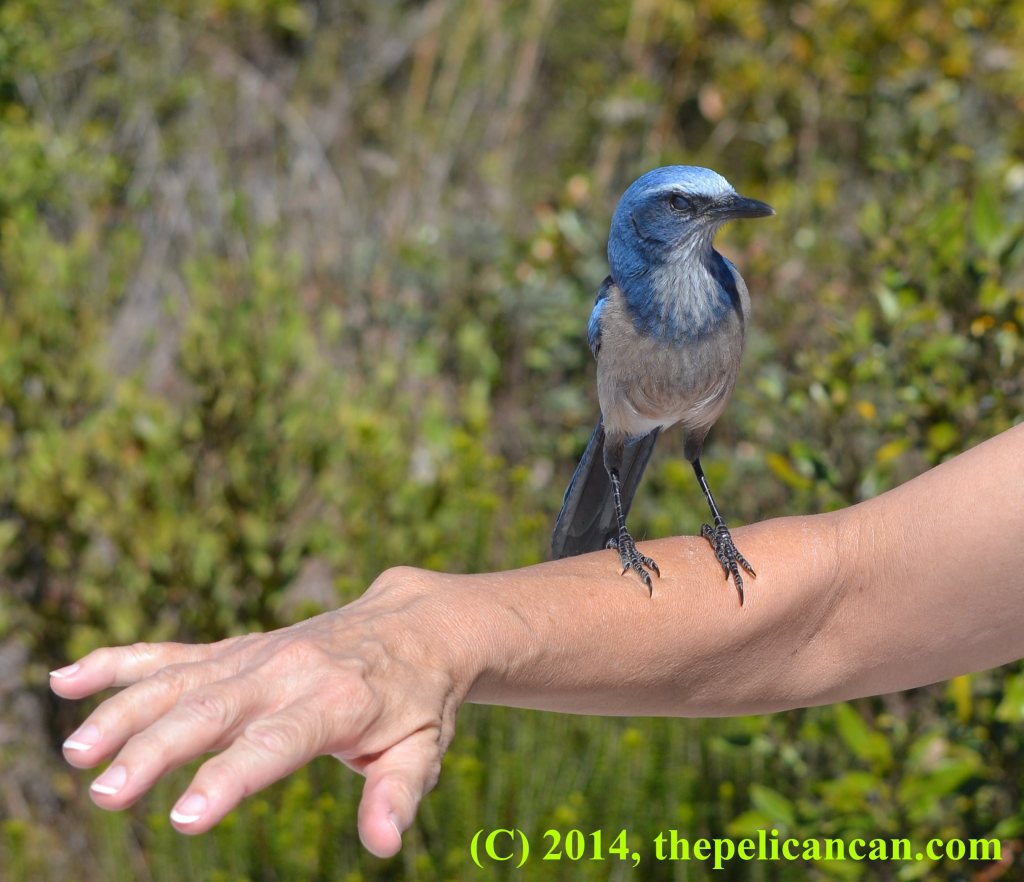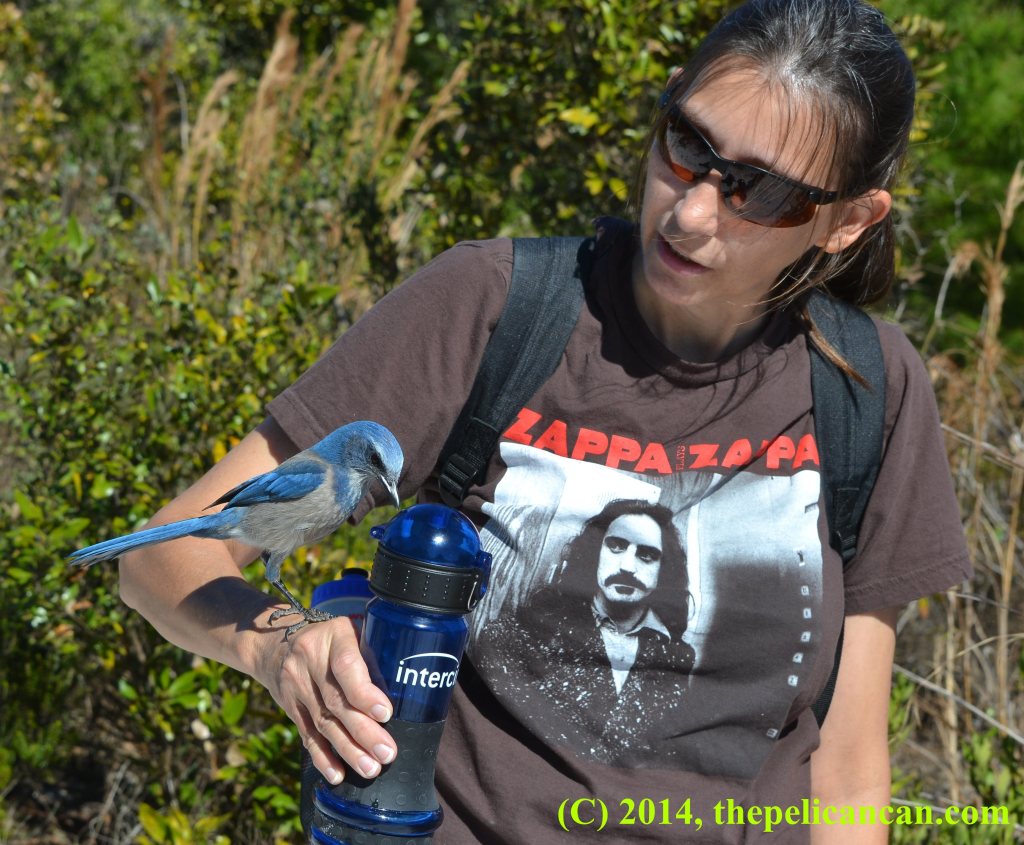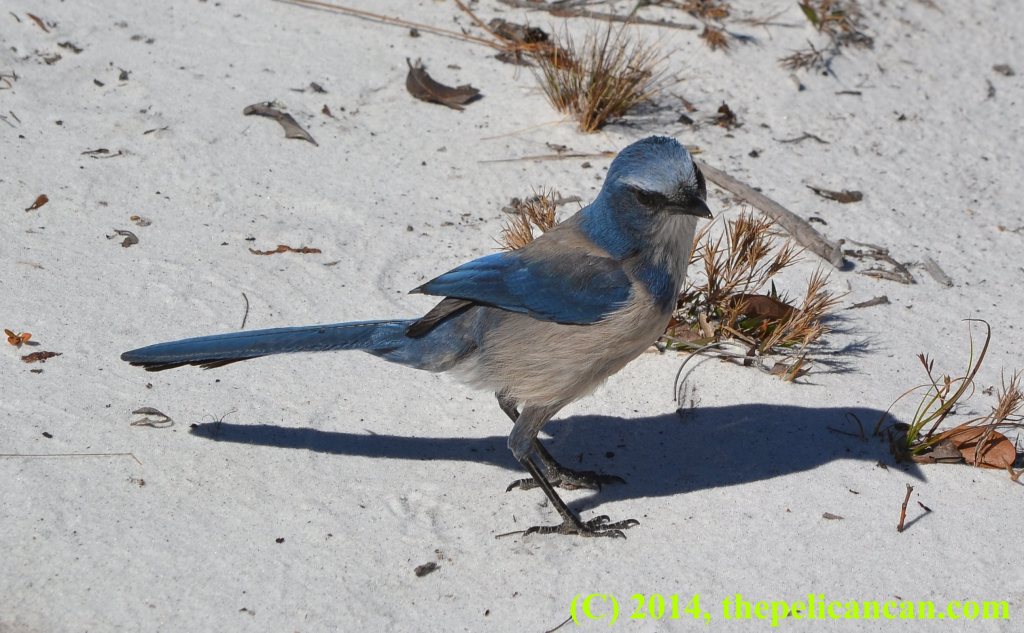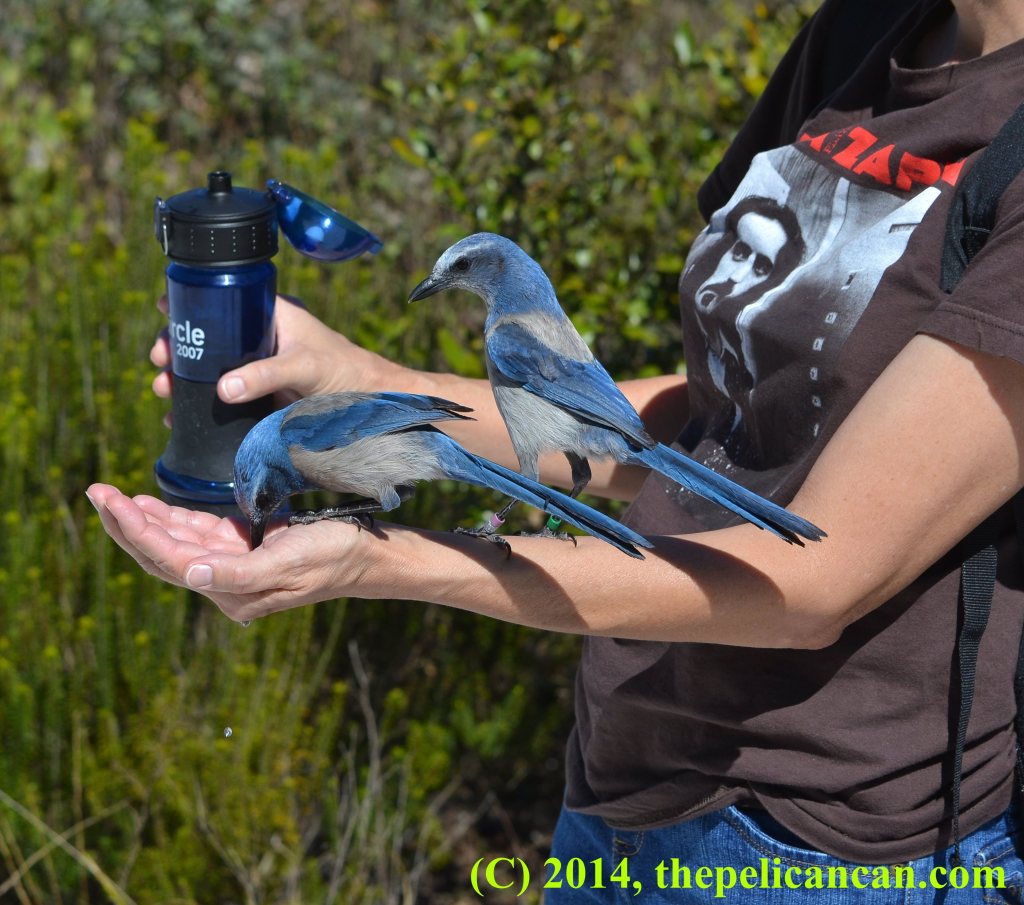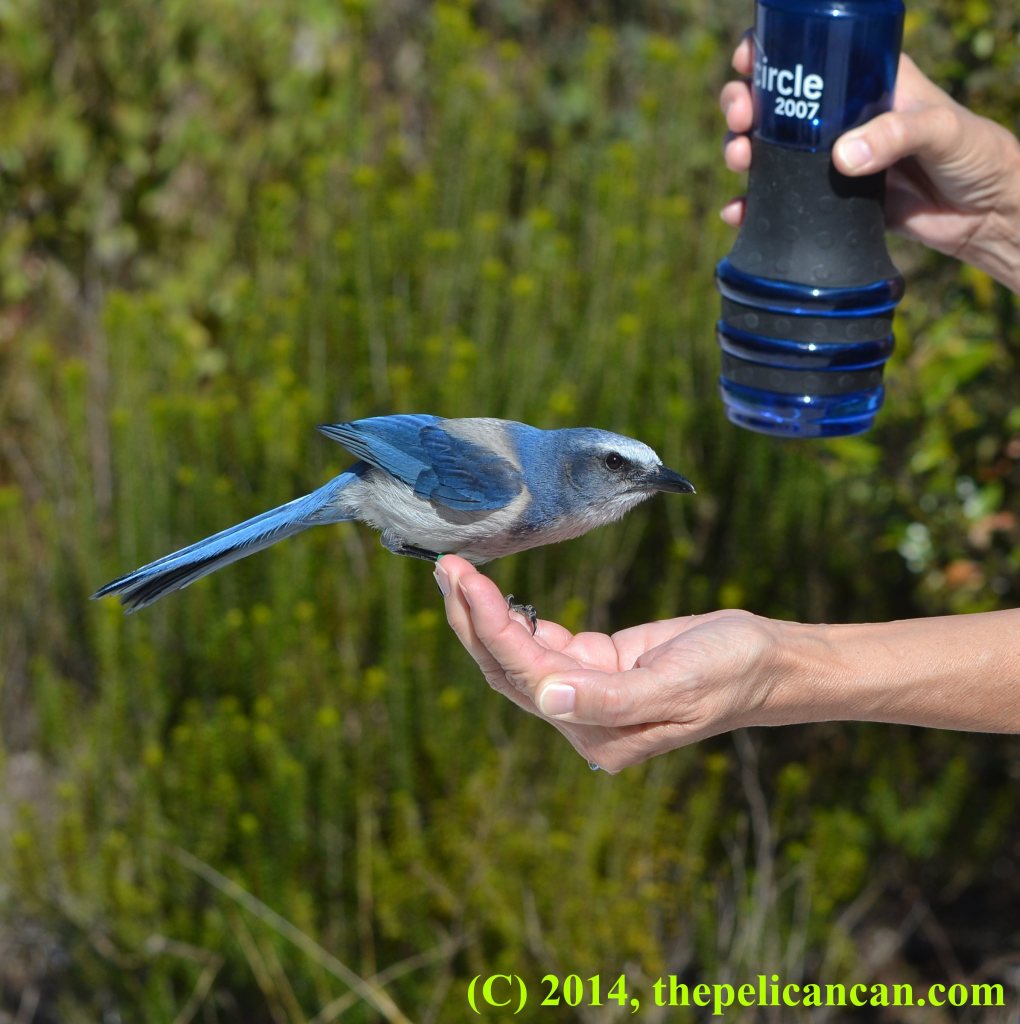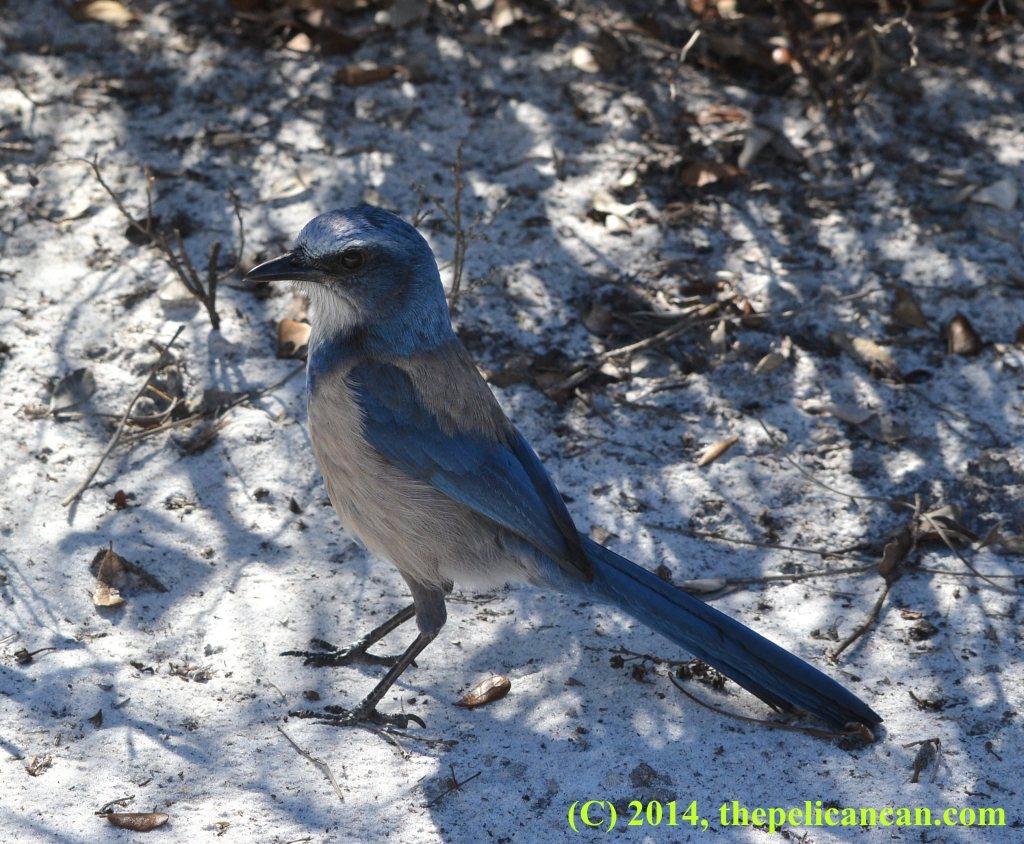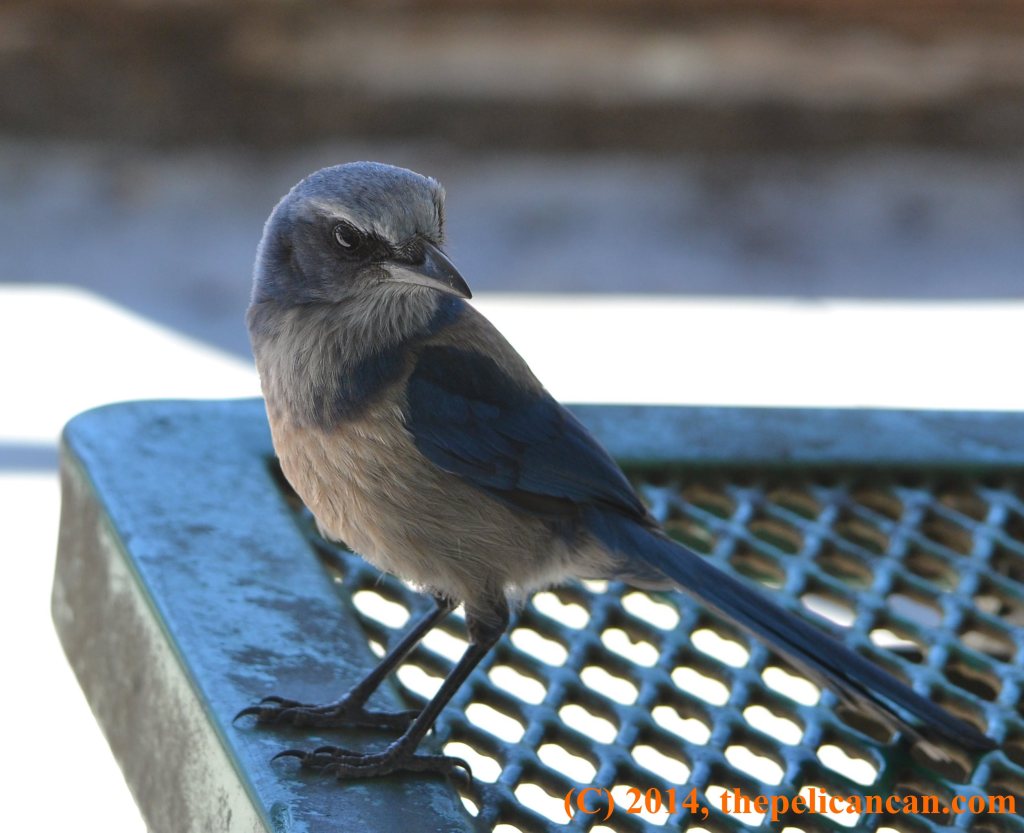Before Q and I left for Florida, I researched possible birding sites online at the Great Florida Birding Trail. I decided that Q and I should try to visit Gatorland, as it boasted a large rookery in a section of its park. My mother mentioned this to a patient of hers who was a photographer and a birder. He said, “Gatorland is the second best rookery to visit in this part of the state. The best is in St. Augustine.”
So Q and I found ourselves driving up to St. Augustine to visit the rookery at the St. Augustine Alligator Farm Zoological Park.
A few days before we left for the gator farm, we went to their web site to buy tickets and noticed that there was a hotline number that provided updates about the rookery. Q called the number, and a week-old message began to play. Roseate spoonbills were nesting! Wood storks were arriving and pairing up! That was very exciting to me, because I had really hoped to see wood storks. Roseate spoonbills were even better; I hadn’t even considered we would get to see them.
The night before we left, Q and I went down to the lake to watch the Atlas V rocket launch. In the past, when the wind has been just right, we’ve been able to hear the take-off, although that didn’t happen this time. I wondered if the rocket would burn as brightly as the shuttle. No worries there!
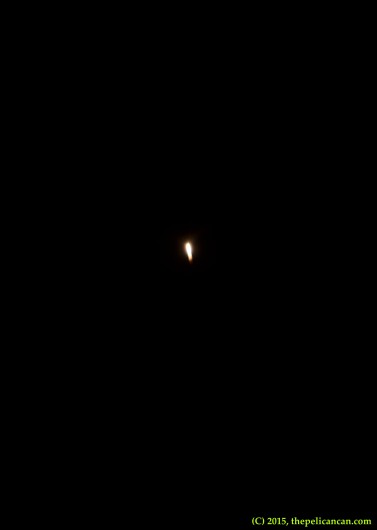
The Atlas V goes up from Cape Canaveral, just as bright as the shuttle.
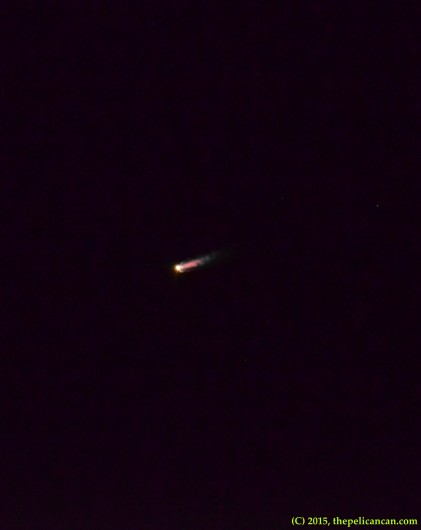
If you click on the pic and zoom in, you can see the two boosters, which look like small red triangles, falling from the rocket.
When Q and I got to the gator farm the next day, we eagerly followed the signs to the rookery. We ended up on a wooden boardwalk that stretched over a small stream. Gators lounged in the water and on the shores. Around the boardwalk were trees covered in great egrets, snowy egrets, wood storks, and roseate spoonbills.
I sought out the spoonbills first. Most of the birds were standing behind foliage or sleeping or lounging near their nests. The pink of their feathers was brilliant in the sunlight.
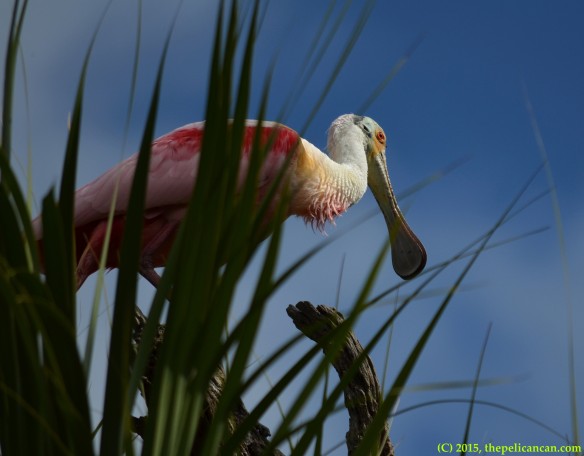
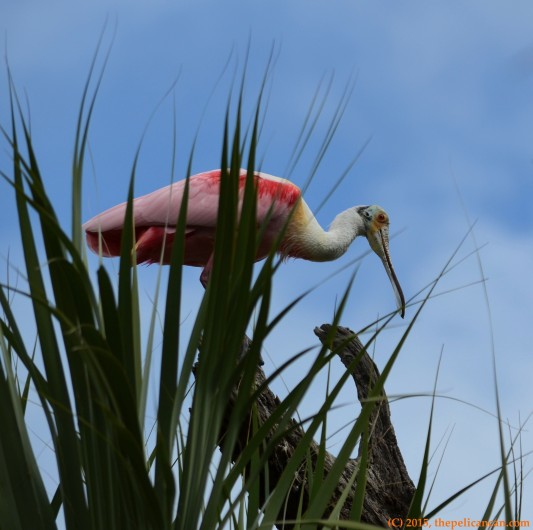
This spoonbill was working on a nest with a mate.
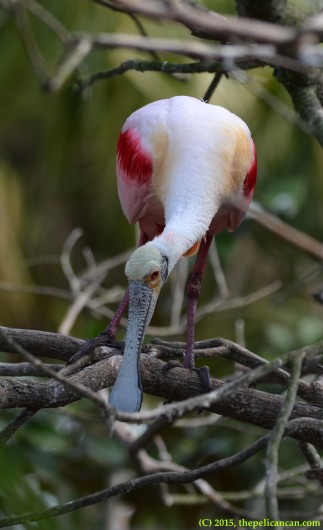
The great egrets were ready for mating; their lores were bright green. I joked to Q, “Hey, we came over a thousand miles to see a bird we could have seen at the UT Southwestern rookery!”
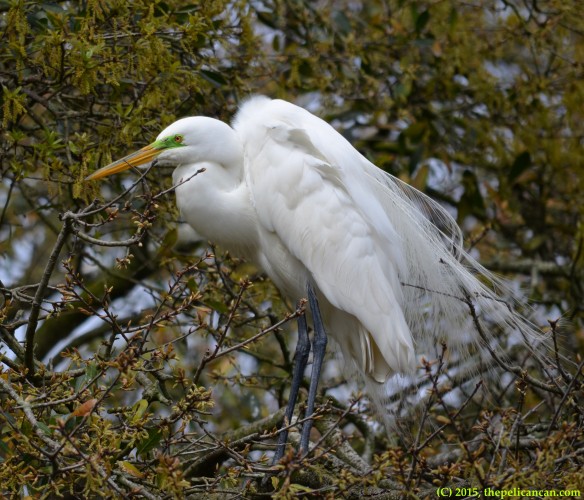
We might be able to see the next bird down east of Corsicana, but we certainly wouldn’t be able to see it as closely as we could in St. Augustine.
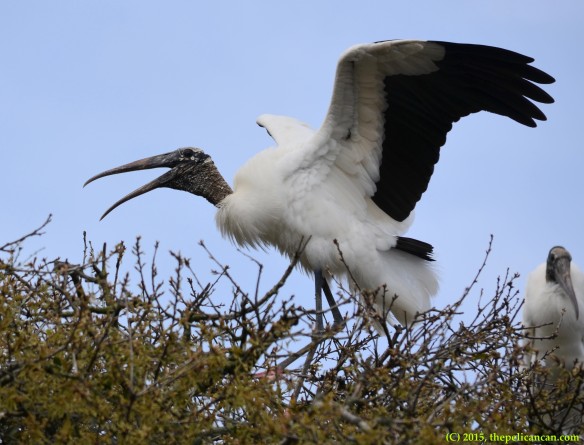
Some younger-looking roseate spoonbills were at the rookery. Like flamingos, the vibrant pink color of the spoonbill’s plumage comes from the food they eat. More mature spoonbills have feathers that are colored a much deeper, brighter pink.
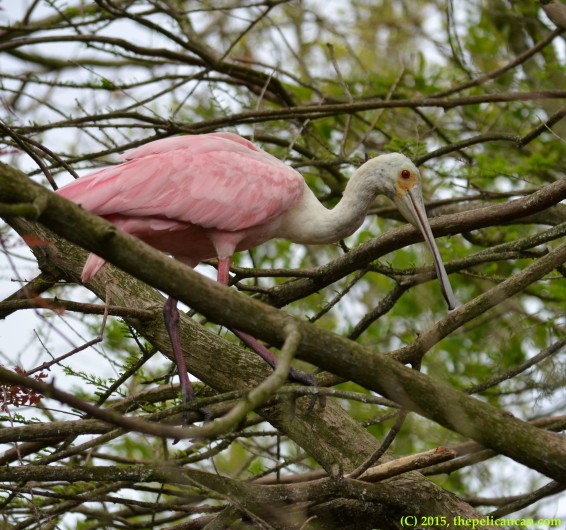
Oh! I am so young and lonely! I wish I could find a mate!
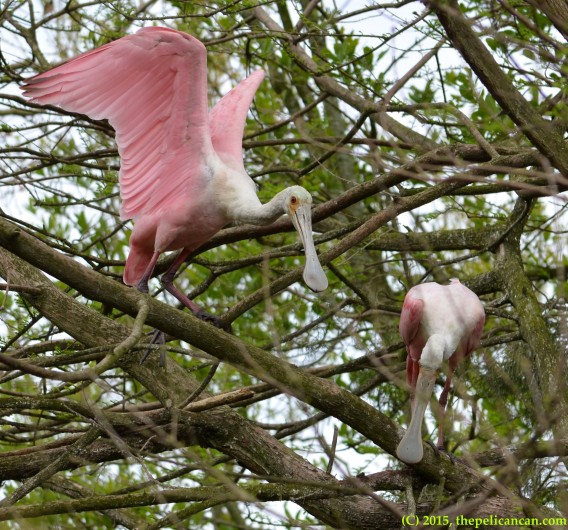
HI! Will you be my mate?
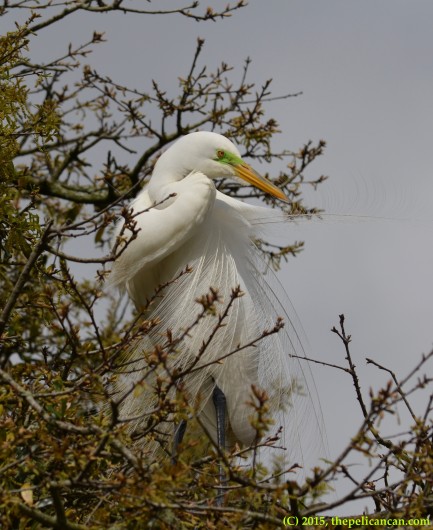
Now that pelican season is over, this great egret is vying to get on the cover of Wow! Waterbirds! magazine.
Not many of the wood storks seemed to have paired up. I saw only a few on nests, and a few more standing together. Most of the other storks were either hanging out by themselves or in small groups.
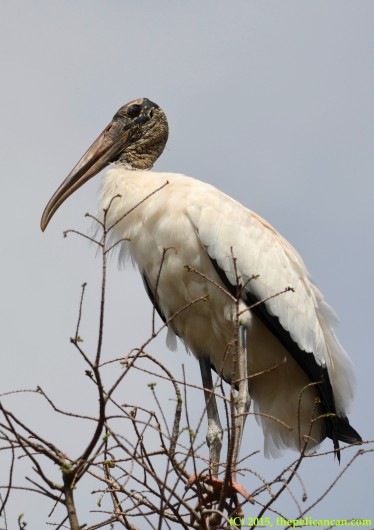
The next wood stork stood on this tree with her beak agape for a few minutes. She wasn’t panting like I’ve seen hot egrets and black-crowned night herons do, and the gape didn’t seem directed toward any other bird. From what I’ve read, female wood storks are the sex that typically engages in this kind of multi-minute gaping.
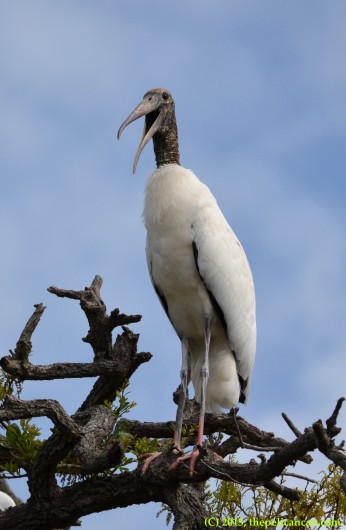
The male great egrets were out gathering sticks to bring back to their mates. That was my favorite part of watching the birds at the UT Southwestern rookery last year.
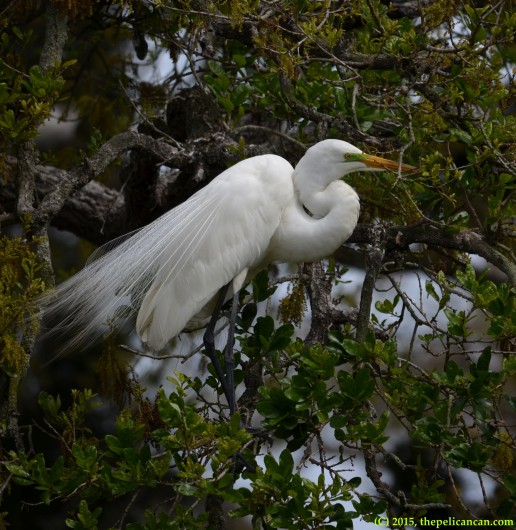
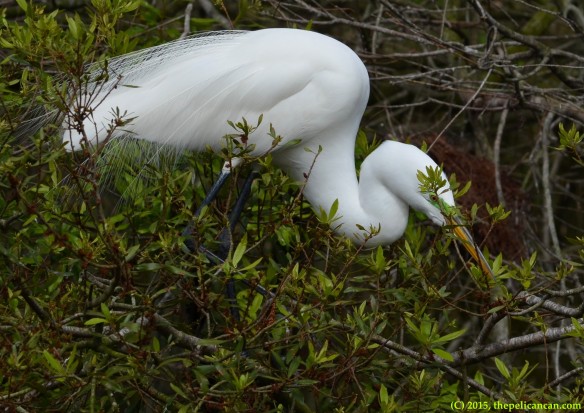

The birds gave zero shits about the people nearby. The males frequently flew over the boardwalk as they went in search of their nesting material.
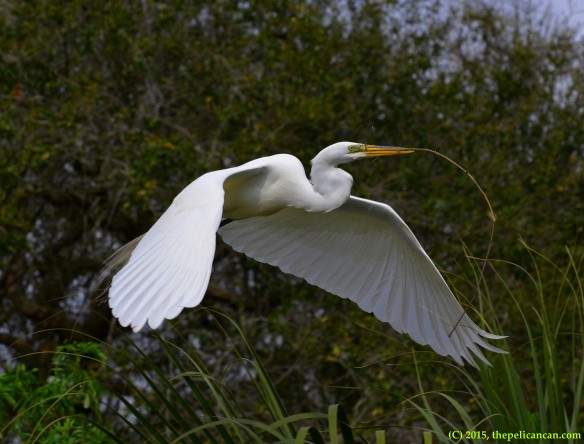
Coming through, coming through, gotta get this home to the missus.
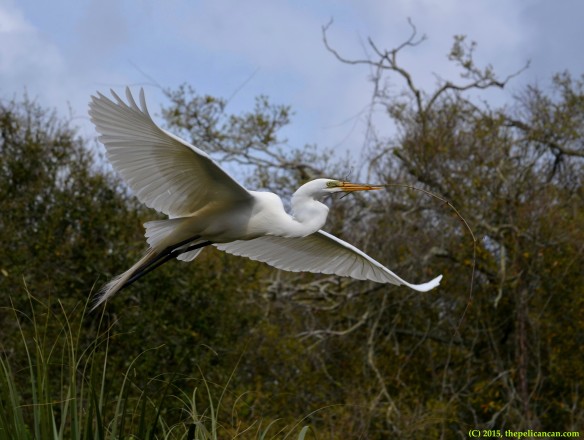
Maybe she’ll let me mount her if she really likes the stick.
The male that was flying landed on a nearby nest and presented his stick to his mate. I watched him leave, scout out sticks, and bring them back several times. Sometimes the female was still busy weaving a stick into the nest when her mate would reappear with more material.
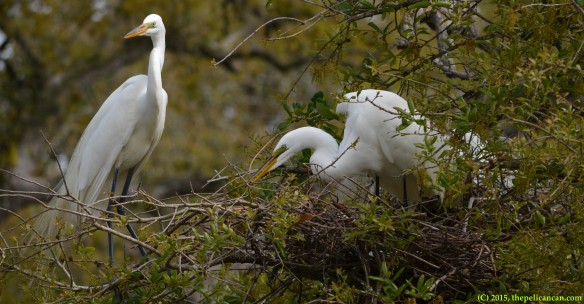
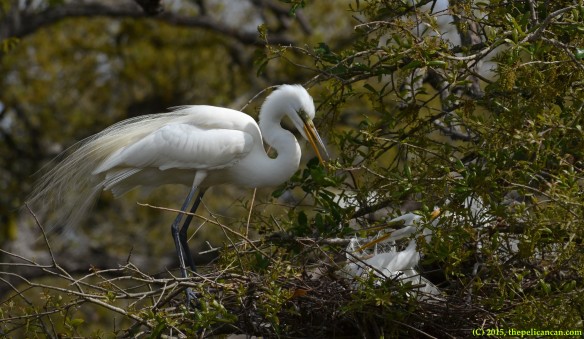
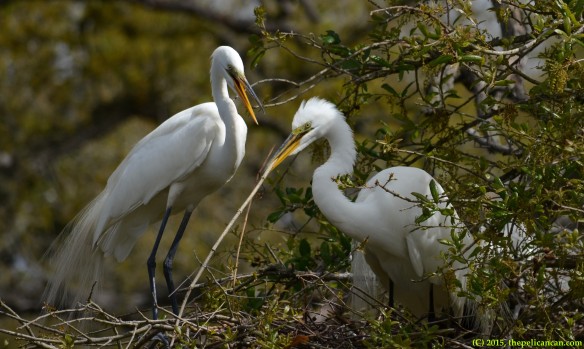
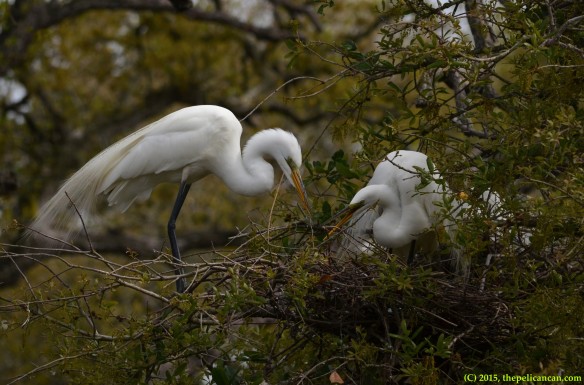
After the male disappeared for several minutes on another stick-gathering expedition, I started looking around again. That’s when I realized that mature roseate spoonbills have orange tails. I’m not sure whether their tails are always orange or if it is only part of their breeding plumage.
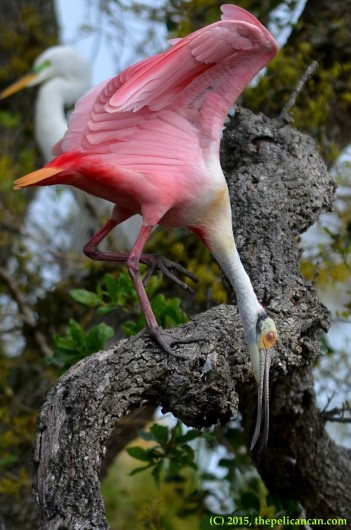
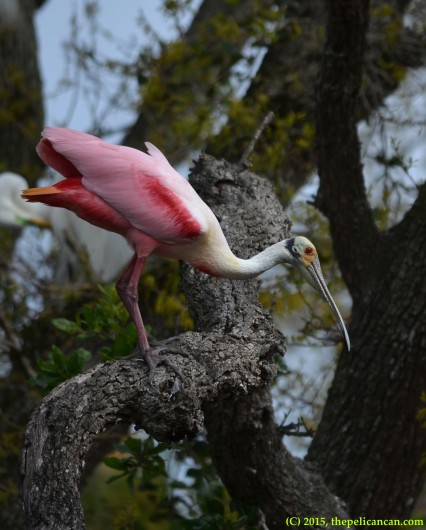
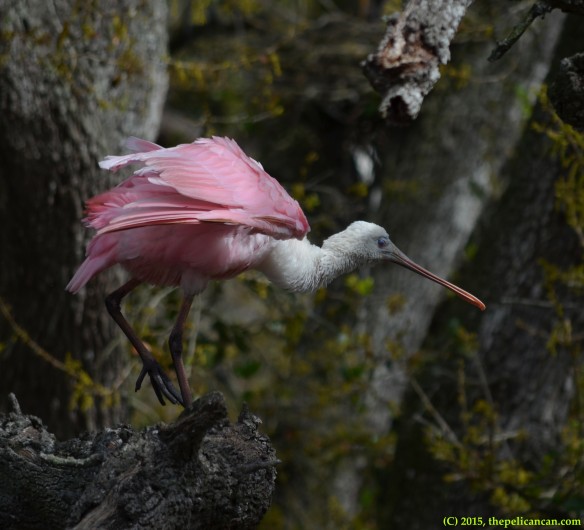
Hey, I’m still sexy, even if I don’t have an orange tail yet!
I started watching a nearby snowy egret. The first time I heard a snowy at the UT Southwestern rookery, I had a difficult time describing what it sounded like: kind of a high-pitched, goat-like, gobbling, bleating sound. Watching them was much more fun than listening to them because they were so excitable and aggressive.
The snowy I was watching turned out to be a male, because he climbed up to a female who was hanging out on the same tree and mounted her.
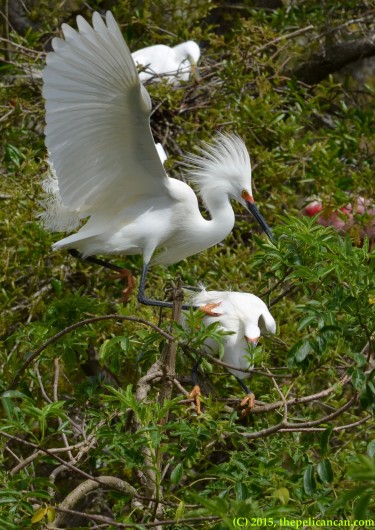
Yay! Bird sex!
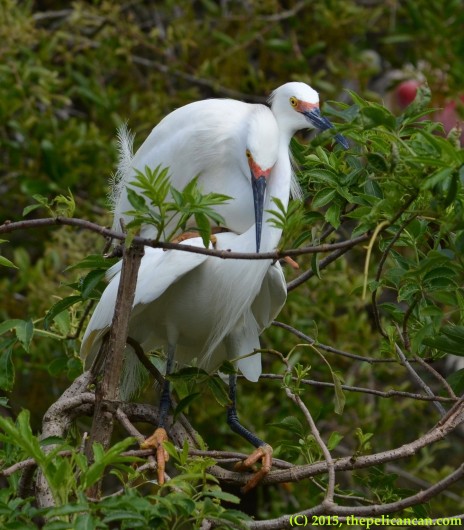
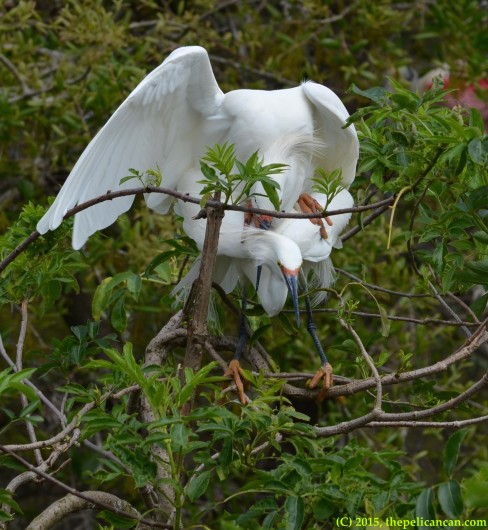
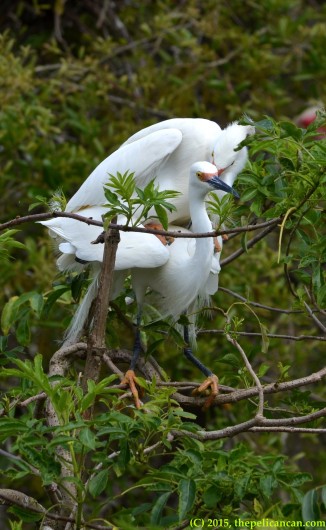
Let me whisper sweet nothings into your ear, my darling.
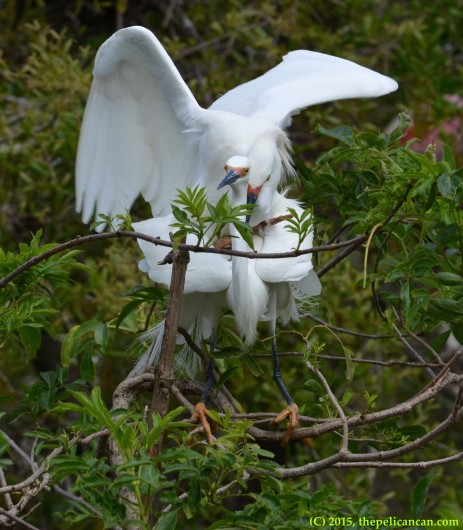
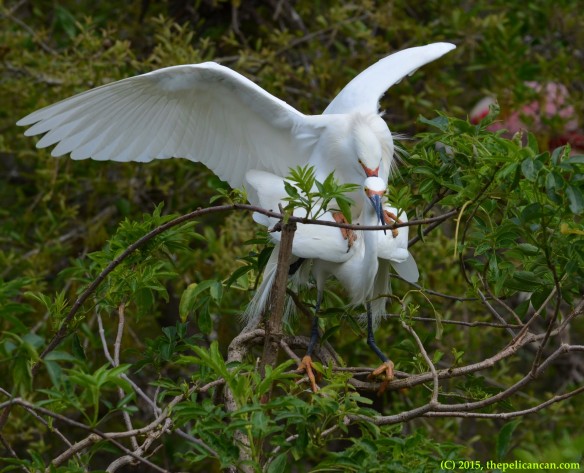
His toes look like gnarled carrots.
What happened after they finished mating shocked me.
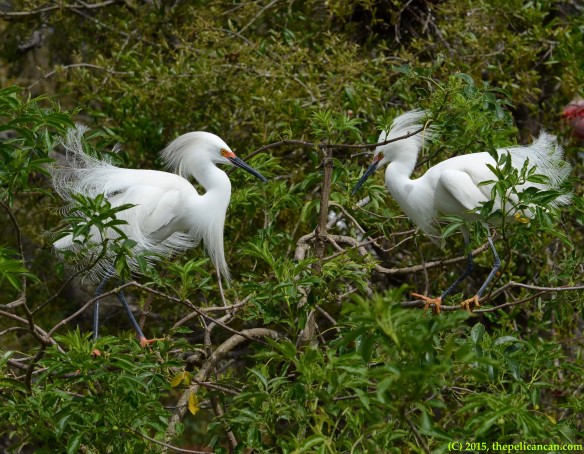
So, does this mean that I should start gathering sticks for you?
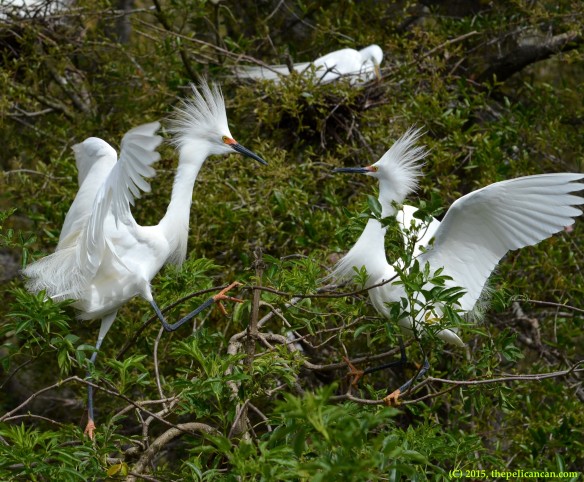
Or does it mean that you should GET THE HELL OUT OF HERE!
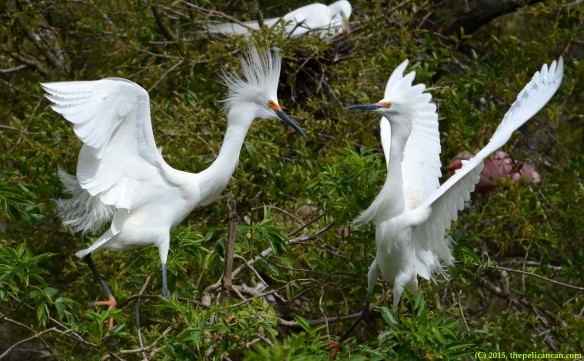
I mean it! GET THE FUCK OUT OF HERE, NOW!
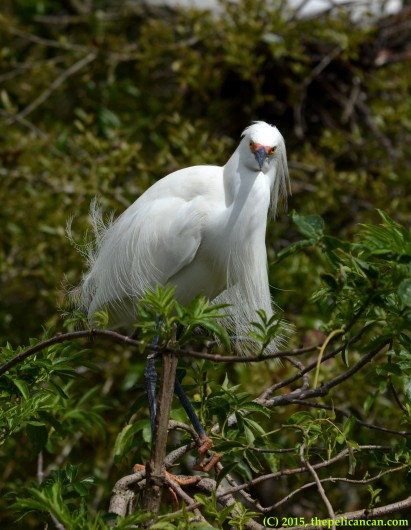
Do not hate the player, human; hate the game.
The males of some bird species, such as pelicans, are initially antagonistic toward a potential mate, running off females who try to cozy up to them. Eventually the female’s persistence wears down the male’s resistance, and they pair up. Running off a potential mate, however, occurs well before the birds mate, and mating occurs after the male has accepted the female. A snowy running off a female directly after mating with her does not seem like normal behavior. I’ll have to look into it.
A different snowy egret was hanging out on a palmetto fan. Unlike the first snowy, this bird wasn’t getting any attention.
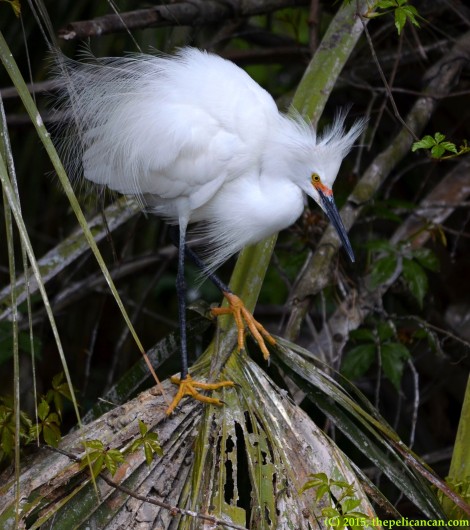
I moved away from the snowies to look for other birds.
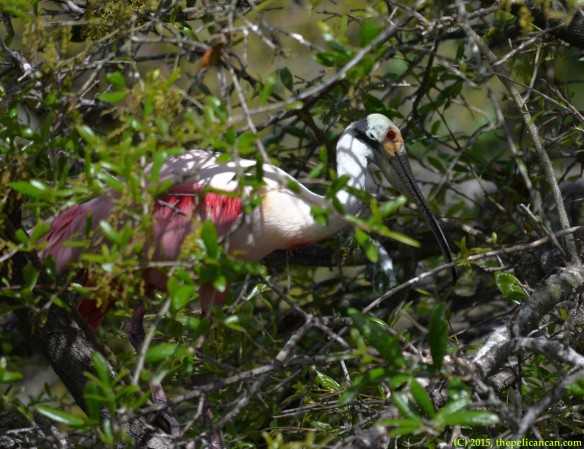
One of the wood storks was posing nicely in a tree. Then she bent forward.
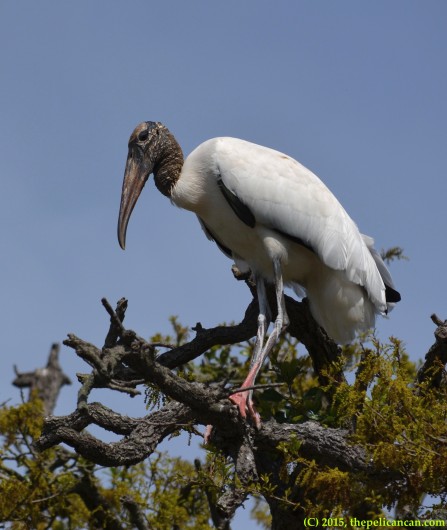
I love watching birds scratch. I think it looks so cute.
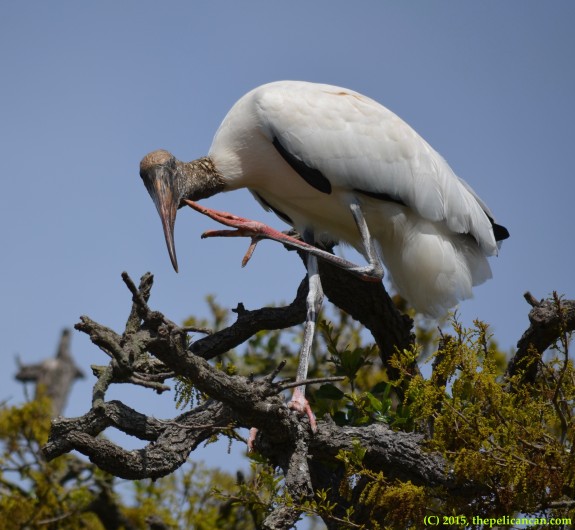
Oooooh, if only my face were closer to my claw!
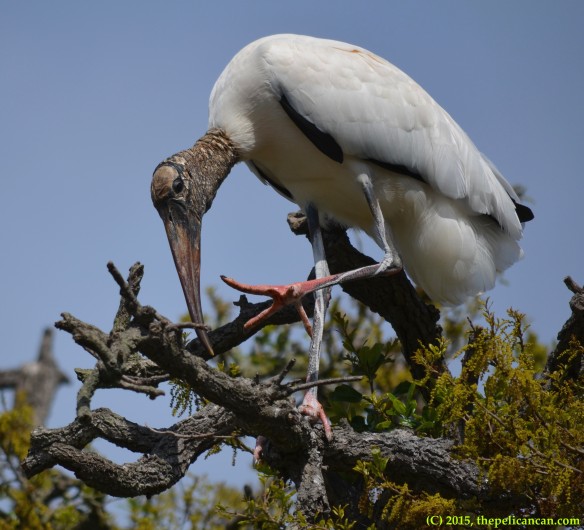
Don’t worry, man, I got this: I’m a stork.
Another male great egret seemed to have found the perfect stick for his mate.
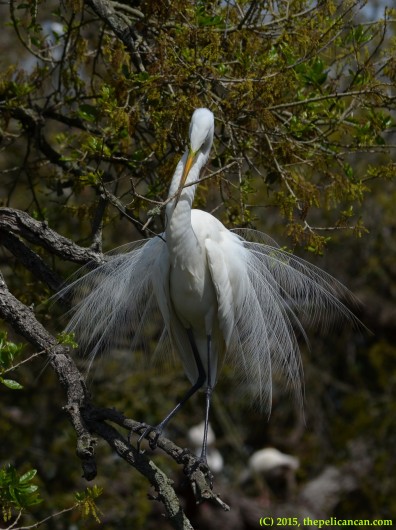
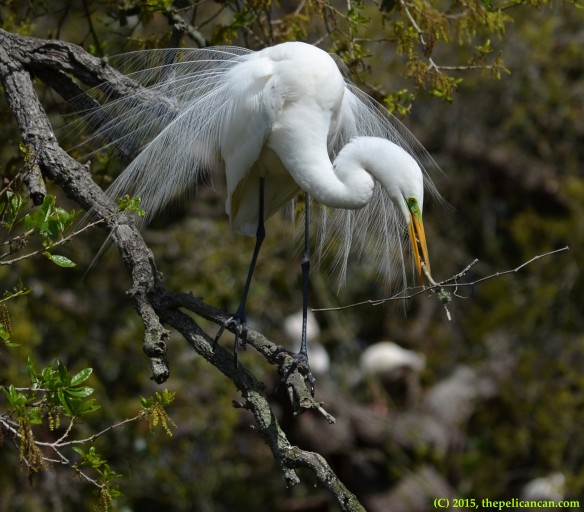
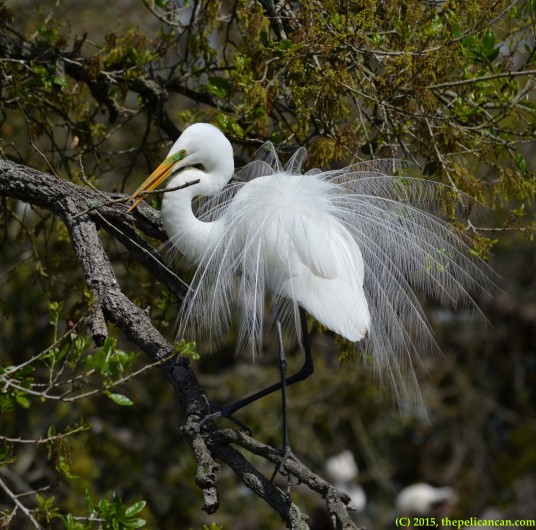
And a different egret streaked over me on his way to his nest.
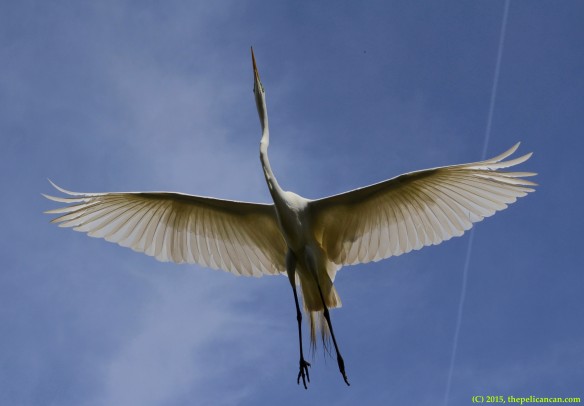
Here ends part 1 with a few more wood storks.
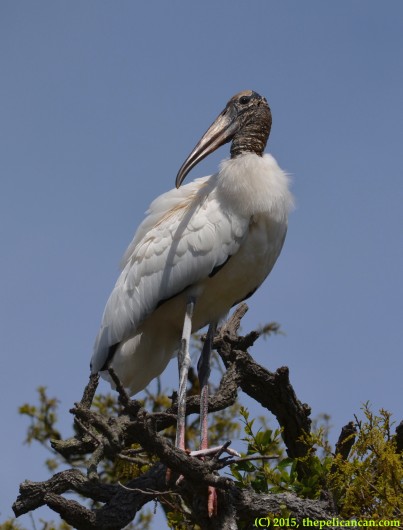
I am vanquisher of the mighty itch!
